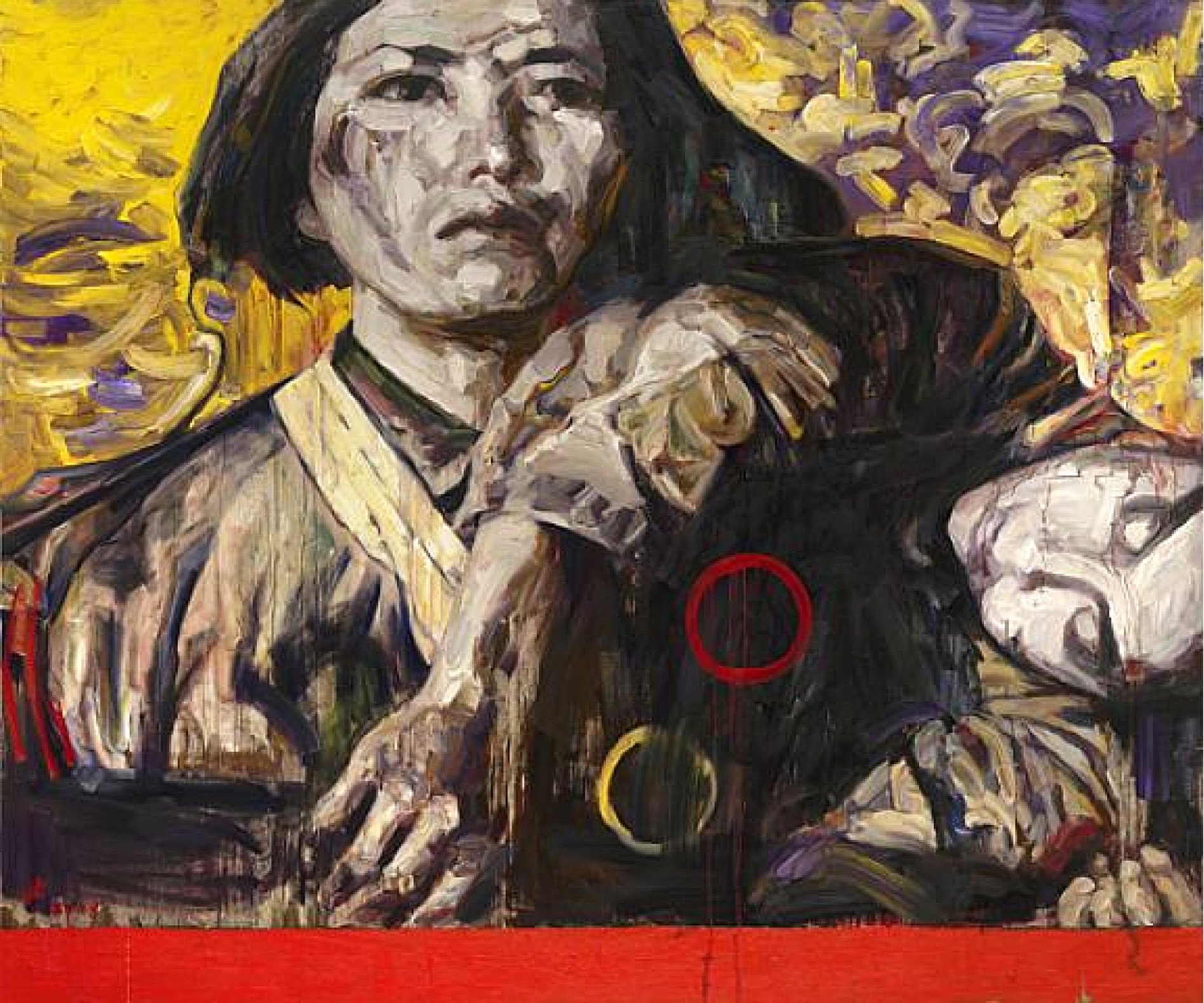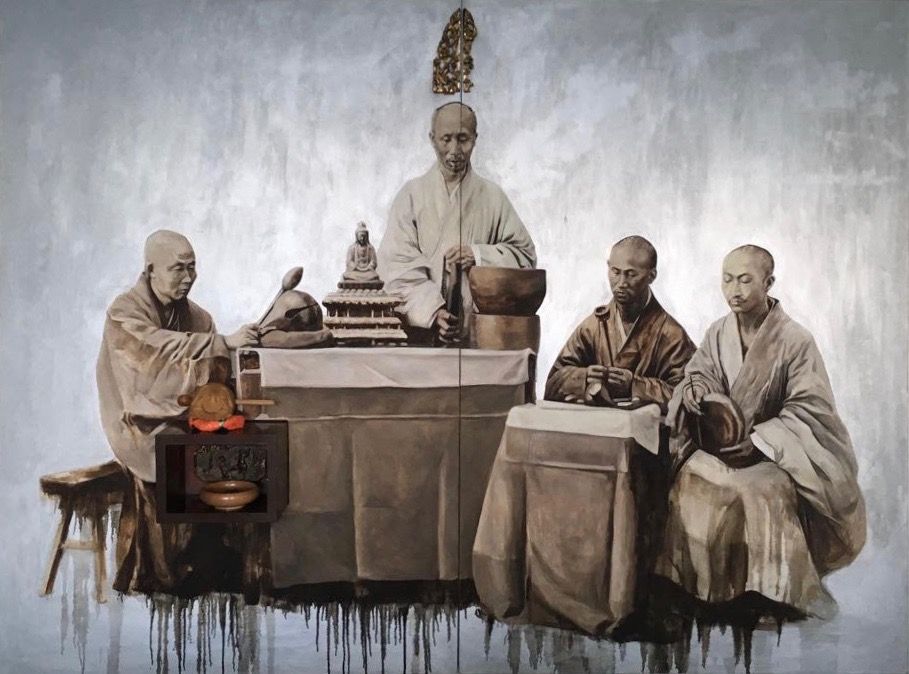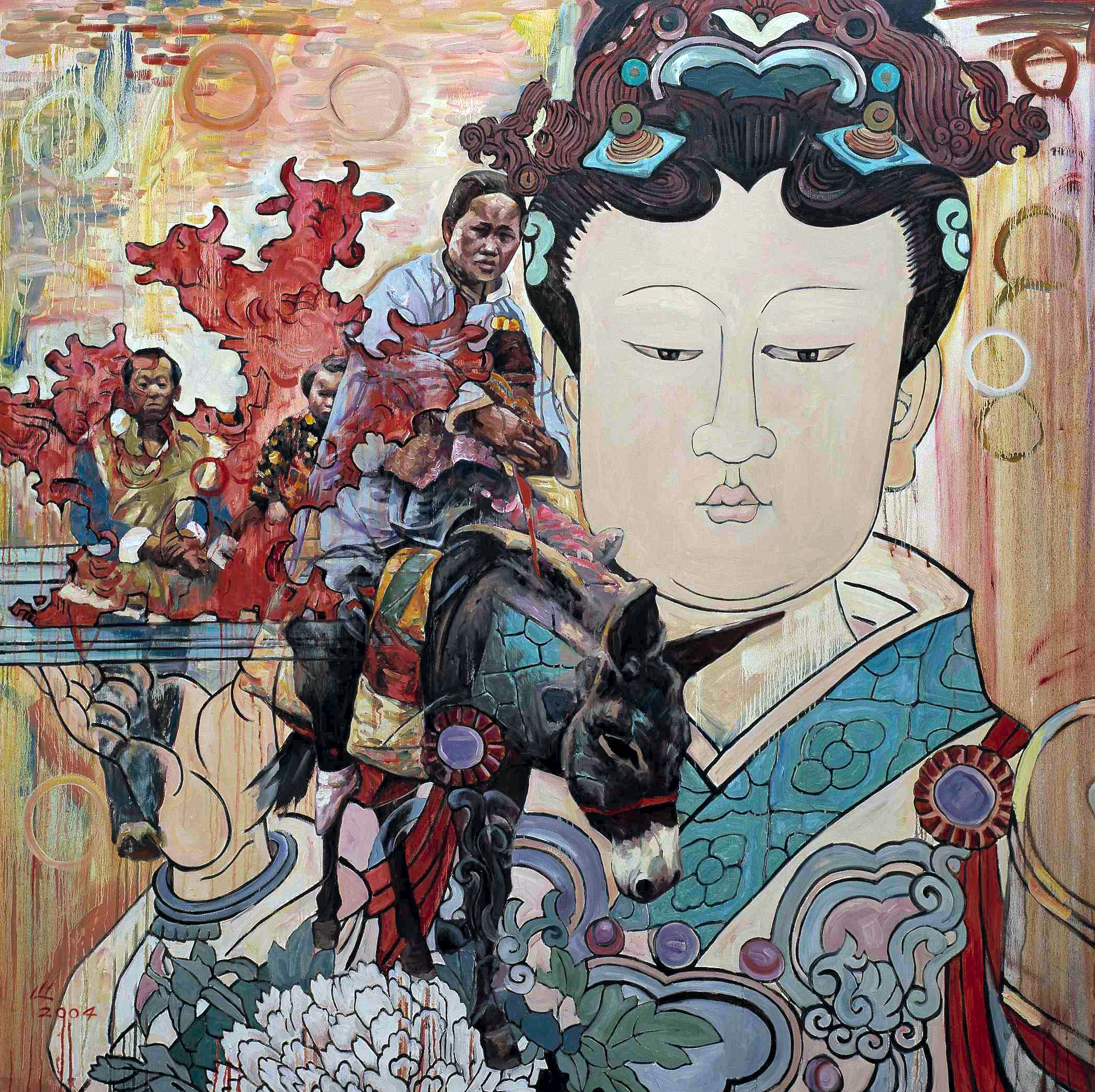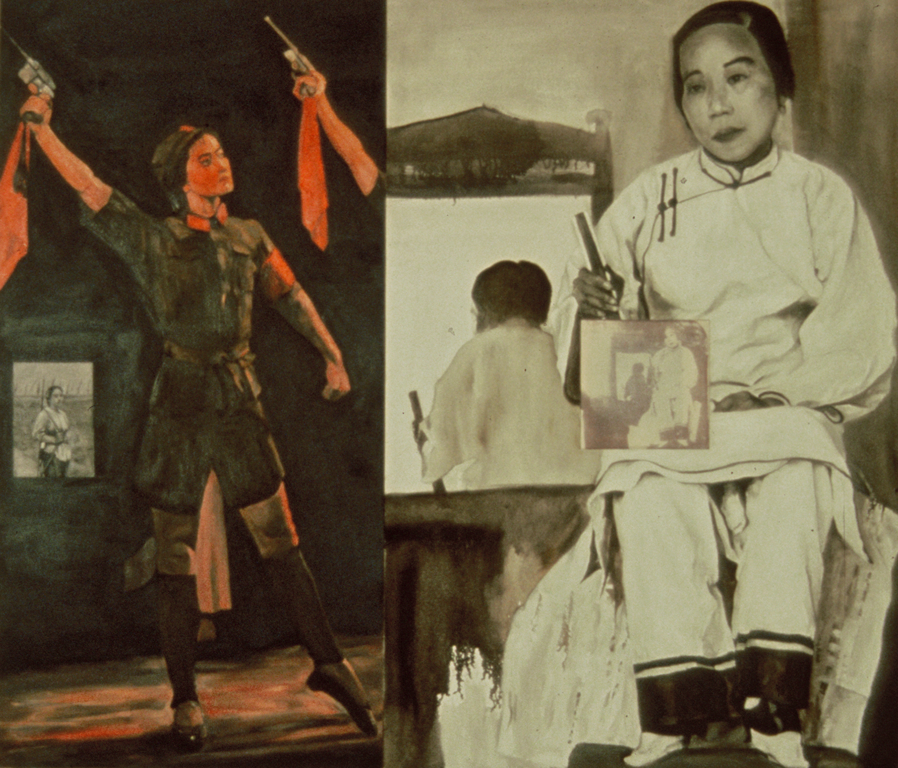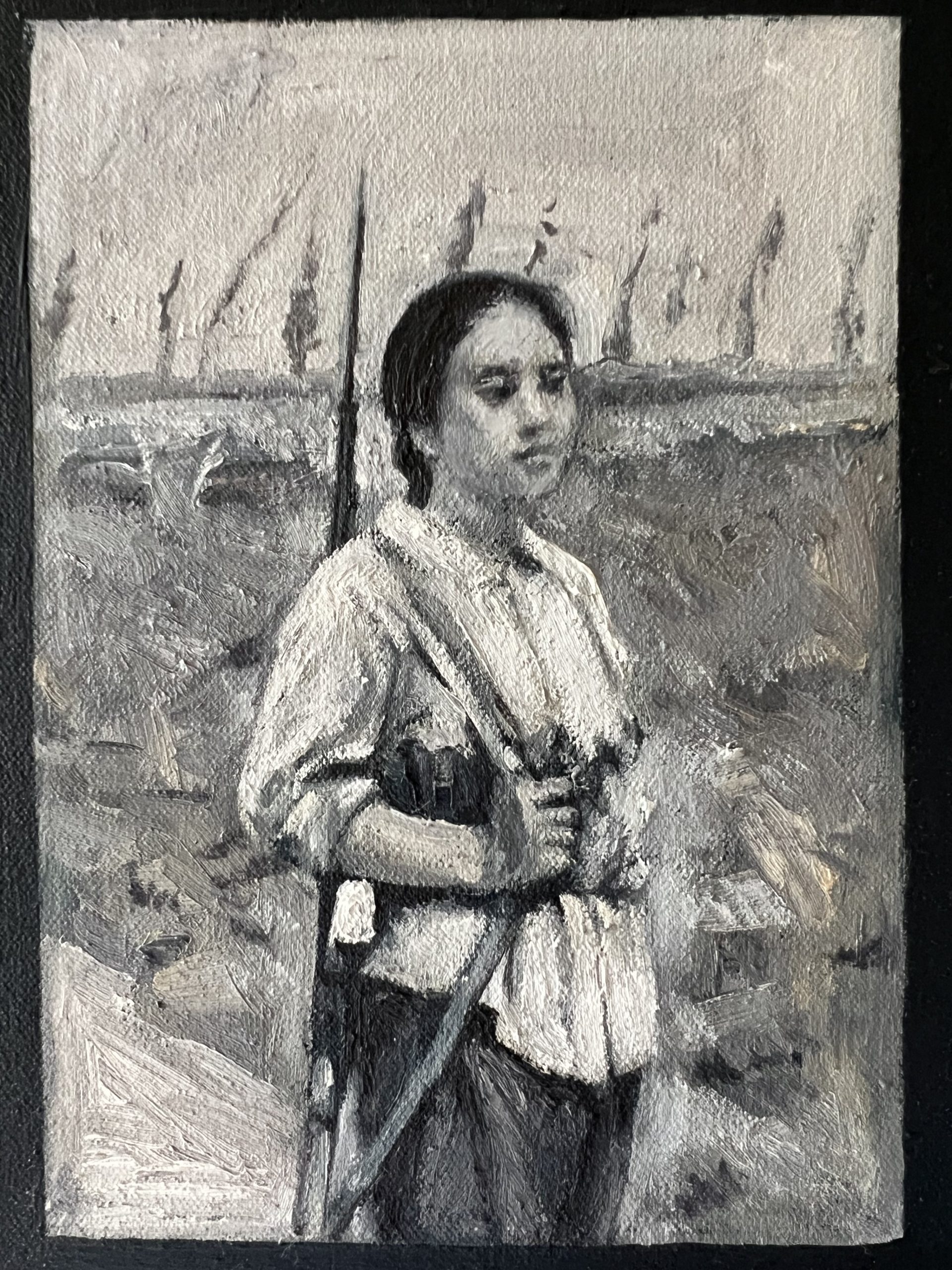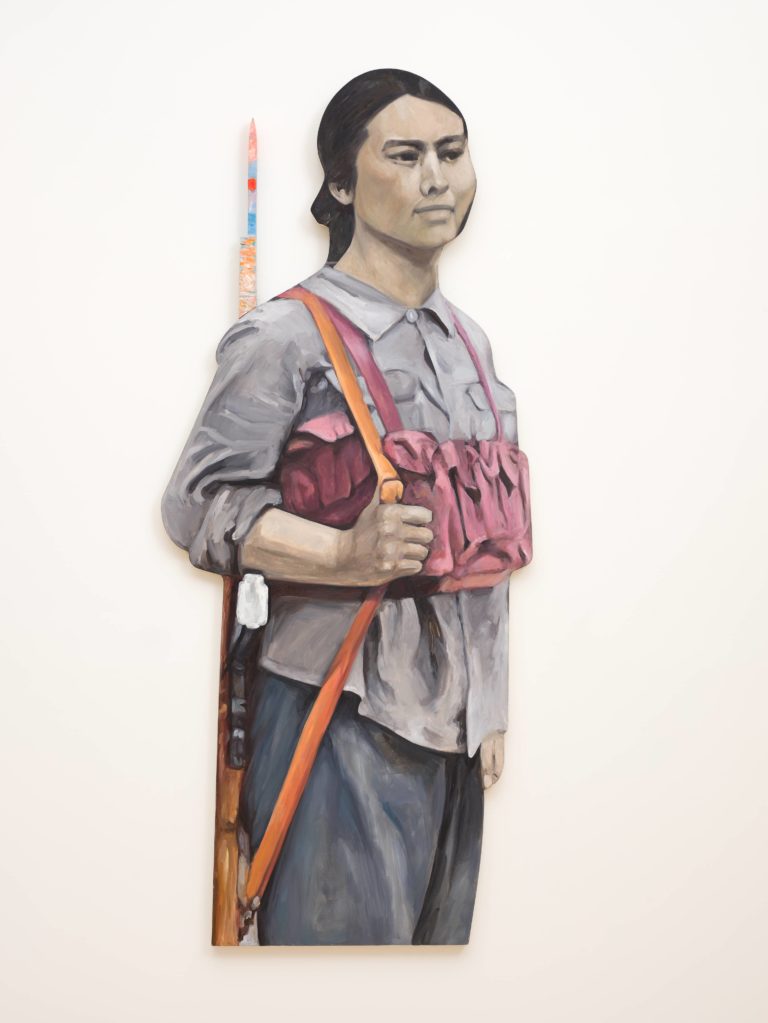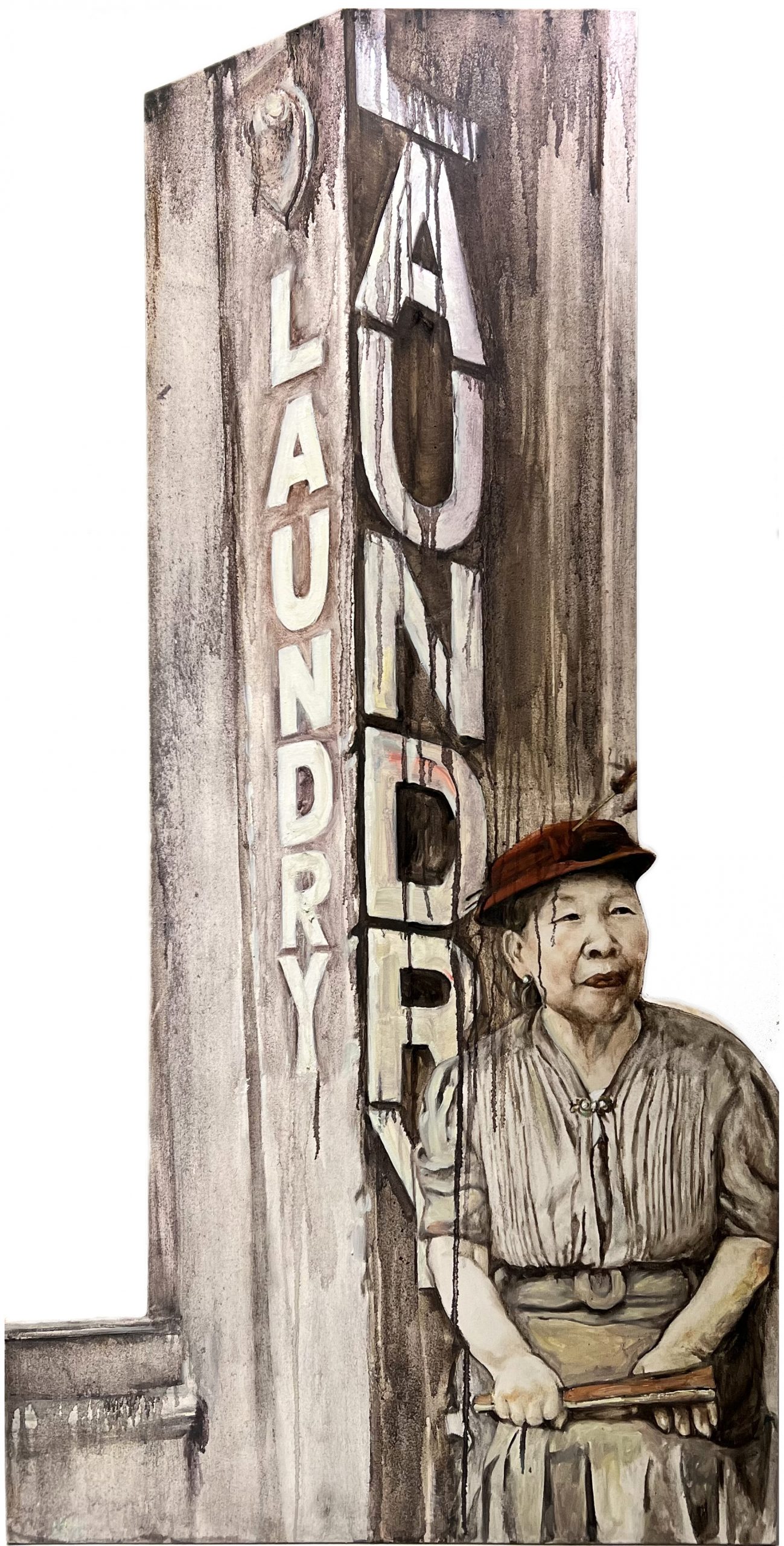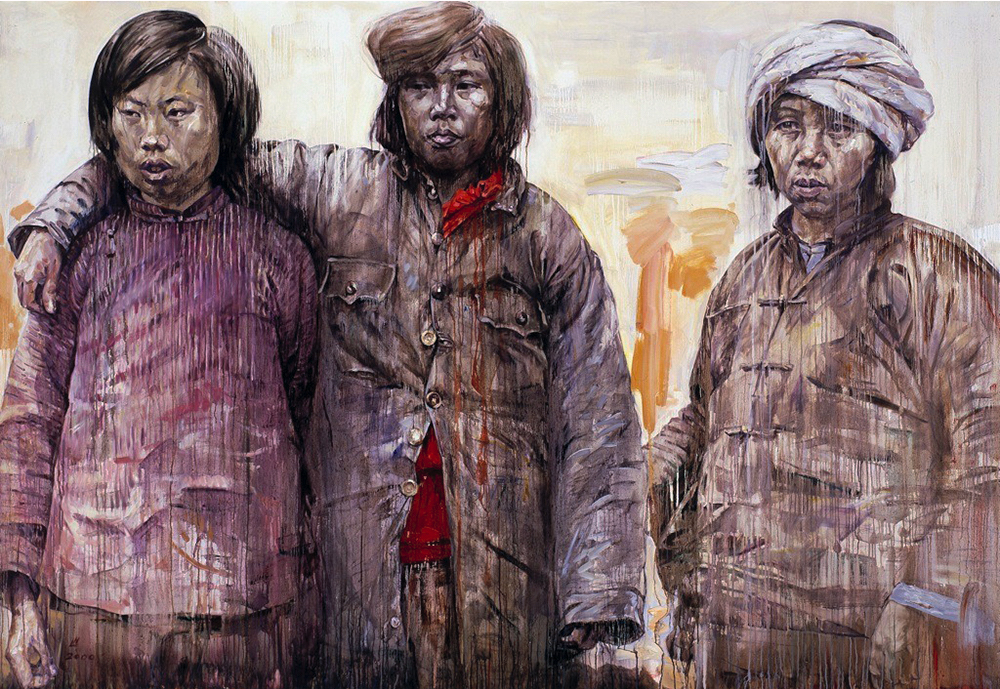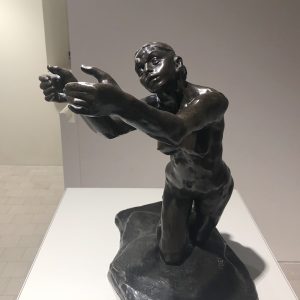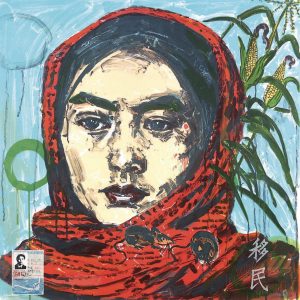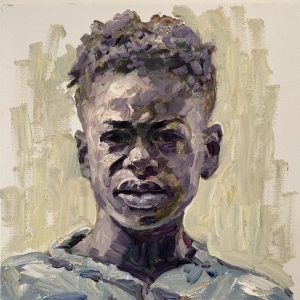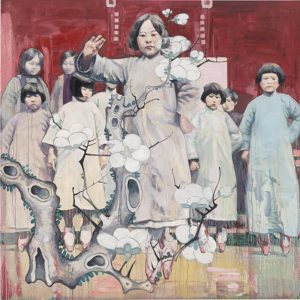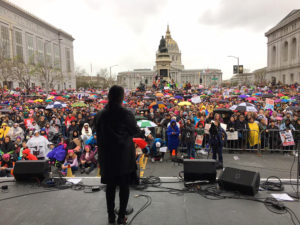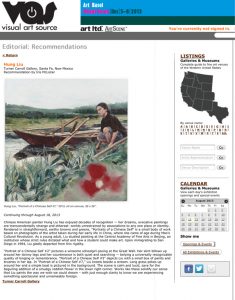Art as a Universal Language: Hung Liu’s Revolutionary Feminism

No Saviour From on High Delivers, 2007, oil on canvas, 80 x 96″ image courtesy Turner Carroll Gallery, ©Hung Liu Estate/ARS, NY
Hung Liu’s impact on contemporary art is immense. Since the Chinese government’s censorship of her 2019 Beijing exhibition, her Smithsonian retrospective in 2021, and her passing that same year, the international art world is anticipating the next deep dive into Liu’s work. Turner Carroll Gallery is proud to present Hung Liu: Memory and Revolution, an exhibition offering a glimpse into Liu’s deep sense of humanism and her revolutionary feminism. The exhibition features selections from the gallery’s own collection of her most significant works, as well as iconic works curated from private collections.
Musicians, 1992, oil on canvas with three dimensional objects, 72 x 96 x 8.5″ image courtesy Turner Carroll Gallery, ©Hung Liu Estate/ARS, NY
The exhibition is notable in that it features major paintings spanning Liu’s earliest years as an immigrant from China, as well as her her shaped canvases, and paintings including three dimensional objects such as Musicians (above), and a major painting from her landmark feminist series, Daughters of China (top).
Most of the works in this exhibition have not been publicly exhibited in recent years, so the exhibition offers a unique opportunity to view Hung Liu through a new lens. Turner Carroll’s Hung Liu: Memory and Revolution runs simultaneous to SFMoMA’s exhibition Hung Liu: Witness, and in advance of The National Museum of Women in the Arts’ exhibition of Liu’s works for its grand reopening this fall.
Travelogue, 2004, oil on canvas, 72 x 72″ image courtesy Turner Carroll Gallery, ©Hung Liu Estate/ARS, NY
Much of Liu’s impressive body of work reflects the widely-shared experience of immigrating to a new culture. Born in northern China in a time of famine, her first migration was as a six-month-old child in her mother’s arms during her family’s fleeing famine in Changchun, known colloquially as “the city of bones.”
While visions of travel and immigration in popular culture typically skew romantic, Hung Liu’s work reflects the realities of displacement, including the internal conflicts and loss of identity that often result from leaving home. Her 2004 work Travelogue (above) is an acknowledgment of our culture’s idealization of immigration, its title referencing the concept of a travel diary, a common narrative theme in movies and books.
Golden Lotus, Red Flag, 1990, oil on canvas, 48 x 32″ image courtesy Turner Carroll Gallery, ©Hung Liu Estate/ARS, NY
Liu’s life in China was a tumultuous one. The daughter of scholars and a member of the Nationalist Army, her father was taken away to a labor camp from the time she was a baby until his death. She saw him only once as an adult when she was fifty years old, shortly before his death. To avoid retaliation by the government, her family destroyed photographs that included her father. Liu’s lack of photos documenting her own family was foundational in her reverence for historic photographs as the inspiration for paintings throughout her career.
Detail, Golden Lotus, Red Flag, 1990, oil on canvas, 48 x 32″ image courtesy Turner Carroll Gallery, ©Hung Liu Estate/ARS, NY
When Hung Liu was a youth, she was removed from school and sent to the Chinese countryside to labor as part of her “re-education” during the Cultural Revolution. The small image in the viewer’s left panel of the Golden Lotus, Red Flag diptych is a painted version of one of Liu’s few photographs of her young self. Carrying a gun, standing in the fields, this image served as an aspirational image for Liu, showing the social justice warrior she would become.
In contrast to the warrior panel in Golden Lotus, Red Flag, the other panel of the diptych depicts a woman whose feet had been bound. A common practice in historic China, foot binding essentially hobbled the woman to the extent that they had no ability to move quickly to defend themselves or to escape aggression. While the revolutionary ballerinas in the left panel might seem strong, their feet were bound in another way. Liu once told Tonya Turner Carroll that while the ballerinas looked like “modern” women, their toe shoes hobbled them and limited their movement similar to foot binding. Liu presented her opinion that even though China seemed to be offering “modernization” to women, there were still gender handicaps placed upon even the most “modernized.”
Avant-Garde, 1993, oil on shaped canvas, 116 x 43″ SFMOMA collection, image courtesy Turner Carroll Gallery, ©Hung Liu Estate/ARS, NY
Hung Liu told us that when she was working in the fields of China during the Cultural Revolution, she saw an airplane cross the sky. She wondered where they people on the airplane were going, and she determined that one day, she would take such an airplane to go to the United States. In fact, she did. Her first flight was all the way to San Diego, where she was one of the first Chinese graduate students in an American MFA program. There, she was thrown into a radically different art world. Instead of Socialist Realist painting style, her radical instructor Allan Kaprow (creator of Happenings) expected her to break through artistic norms and create an original visual language for herself.
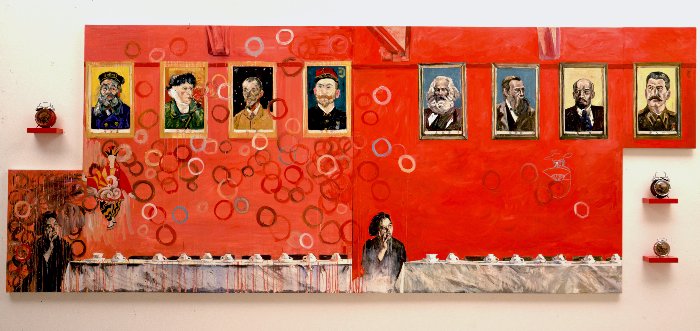
Modern Time, 2005, oil on canvas with objects, 66 x 168″ image courtesy Turner Carroll Gallery, ©Hung Liu Estate/ARS, NY
Laundry Lady, 1995, oil on shaped canvas, 72 x 38″ image courtesy Turner Carroll Gallery, ©Hung Liu Estate/ARS, NY
Liu came to the U.S. in 1984 with the expectation that women would occupy a better social position than they did in China. She found that Chinese immigrants were instead often marginalized in American culture, expected to occupy certain roles and do certain jobs such as working in laundromats or restaurants. This realization is reflected in works such as Laundry Lady, which shows a Chinese woman seated in front of a laundromat, placed in an occupation that was stereotypical for the subject’s intersectional status as both a woman and a person of Asian descent.
Comrade in Arms, 2000, oil on canvas , 78 x 114″ image courtesy Turner Carroll Gallery, ©Hung Liu Estate/ARS, NY
Comrade in Arms is a monumental painting depicting a topic that was monumental to Hung Liu—the bravery and heroism of the women who stood by each other during wars in the China of her childhood. As is the case with all of Liu’s paintings, this composition uses a historic photograph as its inspiration. Liu notes, “This interweaving of images from the ancient and modern past continues my interest in a contemporary form of history painting in which the subjects from one era witness and comment upon those of another, keeping the idea of history open and fluid.” Comrade in Arms is an exquisite example of the best attributes of Liu’s artistic style: powerful gesture, weeping realism consisting of drips and poignant historic subject matter, and transcendent beauty.
In this work, two women support their wounded comrade, embodying an eloquent double entendre of “arms” as vehicle for both war and harm as well as nurturing.
Comrade in Arms is a monumental painting depicting a topic that was monumental to Hung Liu—the bravery and heroism of the women who stood by each other during wars in the China of her childhood. As is the case with all of Liu’s paintings, this composition uses a historic photograph as its inspiration. Liu notes, “This interweaving of images from the ancient and modern past continues my interest in a contemporary form of history painting in which the subjects from one era witness and comment upon those of another, keeping the idea of history open and fluid.” Comrade in Arms is an exquisite example of the best attributes of Liu’s artistic style: powerful gesture, weeping realism consisting of drips and poignant historic subject matter, and transcendent beauty.
In this work, two women support their wounded comrade, embodying an eloquent double entendre of “arms” as vehicle for both war and harm as well as nurturing.
No Saviour From on High Delivers, 2007, oil on canvas, 80 x 96″ image courtesy Turner Carroll Gallery, ©Hung Liu Estate/ARS, NY
Hung Liu’s powerful painting No Saviour From on High Delivers is part of one of her most important series of paintings. Composed as if is a film still, the painting depicts a woman soldier from the Second Sino-Japanese War carrying her fallen comrade into the Wusihun River to drown with her, rather than surrender to Japanese forces. Liu based her “Daughters of China” series of monumental oils on the movie “Daughters of China” (中华女儿) from 1949, and which inspired strength and diligence throughout her life. The title for this painting and others of this series were taken from the lyrics of the Communist anthem The Internationale.
This painting has been exhibited in Beijing, China, and a work from this series is currently on view at the Denver Art Museum.
Both in China and in the United States, Hung Liu centered women’s experiences in her work. The linseed oil drips she created on her paintings’ surfaces were meant to symbolize a “weeping veil” that reflected the blurring of historic memory over time. Her paintings weep for the forgotten women of history, yet her representation of these women was not mournful. Through her paintings, she gave them dignity they might not have had during their lifetimes.
For additional information please contact Tonya Turner Carroll at tonya@turnercarrollgallery.com
November 29 – December 4, 2022 | Art Miami
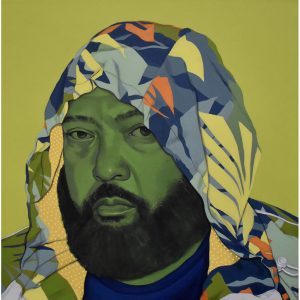 Turner Carroll Gallery is exhibiting Hung Liu, Mildred Howard, and Swoon, at Art Miami, along with Hoss Haley, Judy Chicago, Kara Walker, and three emerging artists with current East Coast museum exhibitions who will show in Miami for the first time: Mokha Laget (Katzen Art Center), Clarence Heyward (CAM Raleigh), and Lien Truong (Nasher Museum of Art).
Turner Carroll Gallery is exhibiting Hung Liu, Mildred Howard, and Swoon, at Art Miami, along with Hoss Haley, Judy Chicago, Kara Walker, and three emerging artists with current East Coast museum exhibitions who will show in Miami for the first time: Mokha Laget (Katzen Art Center), Clarence Heyward (CAM Raleigh), and Lien Truong (Nasher Museum of Art).View artwork that will be at Art Miami here.
July 22 – August 21, 2022 | Hung Liu: Gilded Humanism
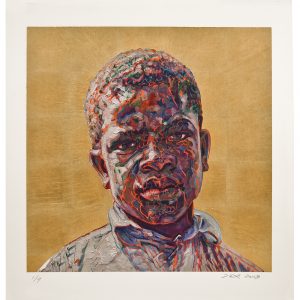 In honor of the one-year anniversary of the passing of our most inspiring friend Hung Liu, we will host an exhibition of her quintessentially humanist portraits. Throughout her artistic practice Hung Liu broke down the barriers of generation, nationality, and class. Cutting through the superficial identities that keep us apart through her tremendously empathetic portraits, she explored universalities of human joy and suffering and our innate need for love and safety.
In honor of the one-year anniversary of the passing of our most inspiring friend Hung Liu, we will host an exhibition of her quintessentially humanist portraits. Throughout her artistic practice Hung Liu broke down the barriers of generation, nationality, and class. Cutting through the superficial identities that keep us apart through her tremendously empathetic portraits, she explored universalities of human joy and suffering and our innate need for love and safety.
Join us this season for an exhibition of mixed media work by Hung Liu in conjunction with Remember This: Hung Liu at Trillium at the University of Oregon’s Jordan Schnitzer Museum of Art. You can also catch Hung Liu: Golden Gate at the de Young Museum in San Francisco through August 2022, and Hung Liu: Portraits of Promised Lands at the National Portrait Gallery in Washington, DC through May 2022.
View work in the exhibition here. View work in the print exhibition here.
Hung Liu: February 17, 1948 – August 7, 2021
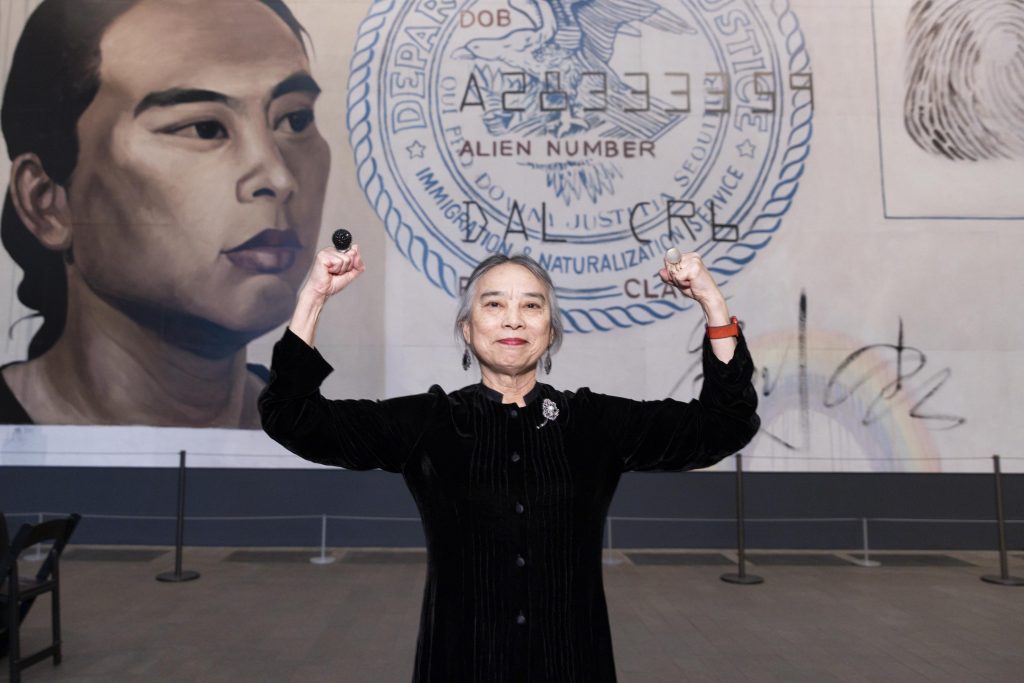
SAN FRANCISCO, CA – July 14 – Hung Liu attends Hung Liu: Golden Gate (金門)” Opening Preview 2021 on July 14th 2021 at de Young Museum in San Francisco, CA (Photo – Drew Altizer)
Hung Liu
Born February 17, 1948 (China)
migrated to the United States 1984 (California)
passage to heaven August 7, 2021
Dear Friends,
Our hearts swell with love and sadness as we report to you that our beloved artist, friend, mentor, and inspiration, Hung Liu, has passed to the next phase of her journey. Diagnosed just last month with pancreatic cancer, she left this world in the same way she lived, with compassion for those who will miss her so profoundly, with immense courage, and with unthinkable generosity and grace. This photo of Liu was taken on July 14 at the opening of her exhibition at the de Young Museum in San Francisco. Her spirit shines through as she gestures triumphantly in front of her monumental (and slyly ironic) self portrait titled Resident Alien.
Hung Liu once remarked that for her, “every day is Memorial Day, and every day is Thanksgiving.” She was grateful for her own ability to break barriers and overcome the enormous challenges she faced as a young female artist in Maoist China, rising to the very top of the international contemporary art world. But she never forgot the people who were the casualties of those challenges. Every day, she saw herself in the distraught and dispossessed, no matter what their nationality, race, gender, or class.
At Turner Carroll, we are heartbroken to lose our beloved friend, but in the spirit of her own words, we will remember her every day, thankful for the way she transformed our gallery and personal lives with her paintings, her laughter, her wisdom, and her friendship. We hope you will do the same, and that you will celebrate one of history’s greatest humanist artists by finding your own solace in her art. These are opportunities to do so in the coming days:
August 20 5-7 pm: opening reception for her solo exhibition, Hung Liu: Sanctuary, at Turner Carroll in Santa Fe
August 21 4-6 pm: opening reception for the exhibition Hung Liu at Pie Projects that will include Liu’s monumental work Music of the Great Earth II at Pie Projects in Santa Fe. This rare opportunity will be accompanied by a discussion with Liu’s retrospective curator, Dorothy Moss, Jordan Schnitzer, and Tonya Turner Carroll.
Now-March 13, 2022: Hung Liu: Golden Gate (金門), Hung Liu’s exhibition at the de Young Museum in San Francisco
August 27-May 30, 2022: Hung Liu: Portraits of Promised Lands, her career retrospective at the Smithsonian Institution’s National Portrait Gallery in Washington, D.C.
We recommend this National Portrait Gallery podcast featuring Liu and director Kim Sajet, recorded in the last several weeks. Just this weekend, the Wall Street Journal featured Liu in this article.
Tributes are streaming in from museum curators and directors, collectors, former students, and friends.
From Dorothy Moss, curator of Hung Liu’s retrospective at the National Portrait Gallery and author of the new book Hung Liu: Portraits of Promised Lands: “It has been such an enormous privilege and honor to work with her over the years. She carries out our work to make people who have been forgotten visible by honoring them with her brush. Her messages of hope and resilience will light our way and offer comfort to so many. As you know, her deeply generous spirit comes through in the work and we will honor her spirit with our show.”
Carrie Mae Weems wrote of Liu: “Whether exploring the conditions of women and children, the brutality of the Cultural Revolution, or the collapse of American feudalism, Liu’s paintings humanize the lives of everyday people. She’s remarkable.”
August 21 – September 11, 2021 | Hung Liu at Pie Projects
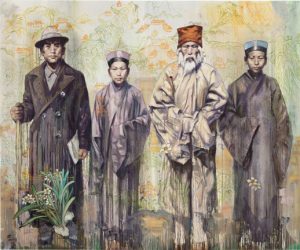 Work in the exhibition may be seen here.
Work in the exhibition may be seen here.
Hung Liu at Pie Projects opens at Pie Projects in Santa Fe at 924B Shoofly Street. The clean contemporary space perfectly lends itself to this exhibition of large-scale paintings.
Opening reception at Pie Projects, 924B Shoofly Street in Santa Fe, New Mexico, Saturday, August 21, from 2-4 pm.
Stay with us for a special event at Pie Projects from 4-5:30pm immediately after the opening. Sponsored by the Tamarind Institute at UNM, gallerist Tonya Turner Carroll, mega-collector Jordan Schnitzer, and National Portrait Gallery curator Dorothy Moss will discuss Hung Liu’s legacy, her prints, photography and the power of iteration in Hung’s work.
August 20 – September 19, 2021 | Hung Liu: Sanctuary
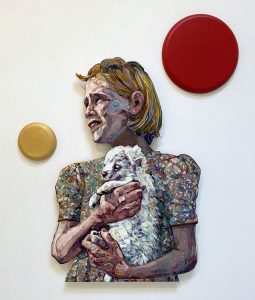 Work in the exhibition may be seen here.
Work in the exhibition may be seen here.
Hung Liu: Sanctuary opens at Turner Carroll just a month after Hung’s solo exhibition Golden Gate opens at the de Young Museum, and the same month as her major retrospective Hung Liu: Portraits of Promised Lands at the Smithsonian Institution’s National Portrait Gallery. Hung’s moment is here and now.
For decades Hung Liu has been recognized for her moment-defining subject matter concerning themes of immigration and displacement. At this precise moment in history, we need to experience Liu’s artwork more than ever before, to help guide us through a moment of national crisis for Asian Americans. Dorothy Moss, curator at the Smithsonian National Portrait Gallery in Washington, DC, named Hung Liu as one of the three most influential artists of the last 100 years in an article published in Artnet News for her “commitment to complicating the dominant narratives of history and making absence visible through work that is both searing and transcendent.”
Opening reception Friday, August 20, from 5-7 pm.
July 17 – August 15, 2021 | Firebrands
Artwork in the exhibition is available on our site here.
A firebrand is defined as a person who is passionate about a particular cause, typically inciting change and taking radical action.
July 17-August 15, 2021: The exhibition and opening reception for Firebrands: Judy Chicago, Swoon, and Hung Liu will be held at the contemporary venue Pie Projects on 924B Shoofly Street in Santa Fe, New Mexico. This exhibition is curated by Turner Carroll Gallery, and will feature rarely seen monumental works by each artist. The exhibition will include historic works by Judy Chicago, Hung Liu’s masterworks Modern Time, and Daughter of the Revolution, as well as a selection of works by Swoon including the box truck-based diorama The House Our Families Built on the final New Mexico stop of its national tour.
Judy Chicago, Swoon, and Hung Liu are all firebrands in the best sense of the word. Each of these women artists overcame tremendous challenges to arrive at the top of the contemporary art world. Chicago, born in 1939, faced condescension for the first several decades of her career by the male-dominated art critics, artists, and gallerists. Chicago would go on to recast the understanding of women’s innumerable contributions to the art world.
Opening reception at Pie Projects, 924B Shoofly Street in Santa Fe, New Mexico, Saturday, August 21, from 5-7 pm.
March 5 – April 30, 2021 | Renegades
The exhibition is available on our site here.
The 3rd in a series of exhibitions treating the role women have played in art history. Opens March 5, 2021 at Turner Carroll Gallery. Titled “Renegades,” the exhibition follows two previous exhibitions titled “Can’t Lock Me Up” (2019) and “Burned: Women and Fire” (2020).
This exhibition celebrates the unveiling of the sculpture “L’implorante” by Camille Claudel, widely recognized as her most important work currently available on the international art market. Other editions of this sculpture are found in permanent collections of The Metropolitan Museum of Art, Musée Camille Claudel, and others.
1864: Camille Claudel, born in 1864, has become known as one of the most important women artists ever to live. She moved mountains to pursue her art on her own terms. Camille convinced her entire family to move to Paris, so she could attend the only art academy that accepted women—L’accademia Colorrosi. She was so committed to carving her own path in the art world that even when the great artist Auguste Rodin became smitten with her skill and independence, she showed great reservation in starting a relationship with him, insisting instead that she must be her own artist, not a reflection of him. This initial indifference to his advances caused Rodin to refer to Claudel as “my fierce friend,” or my “sovereign friend.”
Eventually, when Camille Claudel decided to take part in a sexual relationship with Rodin, she declared it must be on terms she dictated. In 1886, Claudel willfully demanded Rodin sign a contract she devised which included the following conditions: a promise to renounce other women, including favourite models and prospective students, to bring her along on his travels, and to marry her in 1887. In return she agreed to receive him in her studio four times a month. If Rodin did not meet the demands she set forth, the deal was off. He didn’t, so she called it off and renounced the male artistic master and all the trappings of success, public art commissions, and acclaim that he brought with him.
In her quest to find her independence and support herself as a woman artist, Claudel worked hard to secure a state commission for an ambitious sculptural group of three figures. The state commission was granted for her work titled L’Âge mûr (1902). The grouping features images of Claudel herself as L’implorante, a young nude woman beseeching a man (sculptor Auguste Rodin) to stay with her instead of being swept away by an older figure representing death. Auguste Rodin was at that time on the selection panel for French public art commissions, and because he found Claudel’s sculpture so threatening, her public art commission was suddenly cancelled. Claudel’s fight for the sculpture she believed in resulted in her being at odds with the artistic bureaucracy.
Claudel dug in her independent heels, and decided to embark upon a body of work dealing with interior emotions of women. Her works were unusually courageous for the time, candid in communicating emotional and physical pain, loneliness, and desire.
“My sister’s work, which gives it its unique interest, is that it is the whole story of her life.”
-Paul Claudel, poet and diplomat, brother of Camille Claudel
Claudel was a renegade in renouncing both social and artistic norms of her era. She was a renegade in that she created her own terms to live by, much like she created the unconventional contract she had Rodin sign.
1913: While Claudel herself was sent to spend the last 35 years of her life at a sanitarium due to her norm-defying behaviors, her insistence on doing things the way she deemed appropriate paved the way for women artists who came after her to do the same.
1939: Twenty-six years after Claudel’s family had her interned in a mental institution for her bold artistic actions and her outrageous act of choosing her artistic career over having a family, Judith Cohen, now known as Judy Chicago, was born in 1939 in the U.S. Like Claudel, Chicago was artistically talented from a young age, was fiercely independent, and pursued her artistic career with a vengeance. Also like Claudel, she was a renegade. She forsook the coldness of masculine conceptualism and the testosterone-driven assertions of dominance over the land by cutting into it, moving it; manipulating it, in favor of color and concept that were inherently true to her uniquely feminine perspective. Chicago embraced vulvic imagery and colors descriptively female, like pinks, purples, and other pastels. Her iconic collaborative work “The Dinner Party” was inclusive, rather than exclusive. She didn’t compete with women artists; she invited women from far and wide to become part of her artwork that highlighted the contributions of women throughout history. Today, Chicago’s “The Dinner Party” is considered the capolavoro of feminist art history.
1948: When Judy Chicago was nine years old and already taking the bus alone from her home in Chicago to the Chicago Art Institute for art classes, Hung Liu was born in Changchun, China. She came from a long lineage of intellectuals, and her father was an officer in the Nationalist army of Chiang Kai Sheck. Liu’s father was ultimately placed in a labor camp, where he spent the rest of his life. Liu and her mother burned all their family photographs that included him to escape retribution, and fled to Beijing. Liu was recognized very early in life for her extraordinary artistic talent. Because of her brilliance, she was placed in the top high school in Beijing, where Mao’s daughters also attended. There, Liu witnessed her principal be beaten to death by young woman zealots of the Red Army. She watched her math teacher jump to his death from the school grounds, and she saw her classmates beat another teacher to death with shoes, while he was belittled and forced to crawl on the ground in front of his students. Liu endured “re-education” during Mao’s imposed, eponymous Cultural Revolution, in which she was removed from school and forced to toil in the wheat fields in the Chinese countryside for 364 days per year. Though these times were undeniably tough for her, Liu’s determination to pursue her artistic career drove her. She hid a German camera and a watercolor set under her bed, and every day she took time to paint or to photograph her experiences. 35 of her “My Secret Freedom” watercolors are now in the permanent collection of the San Francisco Museum of Modern Art, and photographs she took with that German camera will be exhibited at her Smithsonian Institution’s National Portrait Gallery retrospective in 2021.
1984: When artist David Hockney visited China and the prestigious Central Academy of Art, where Hung Liu and other Chinese luminaries like Ai Wei Wei studied, he met “Ms. Liu” and was so impressed by her work and her countenance that he wrote about her artwork in his China Diary. Liu was determined to leave China for U.C. San Diego, to study contemporary American art movements like Happenings. She persisted in waiting four years–deferring her admission to UCSD each year while she waited–for the Chinese government to finally grant her a passport to pursue her artistic career. An only child, she left behind her mother, with her two year old son to care for, to pursue her artistic dreams. Since arriving in the U.S. in 1984, Liu’s artworks have been collected by more than 50 major museums in the country, from the Whitney Museum of American Art, to the L.A. County Museum.
1970-2010: Both Judy Chicago and Hung Liu dedicated a portion of their careers to teaching women artists to persevere and prosper, as well as sharing their network of dealers, curators, and art critic colleagues. Among the recipients of their shared wisdom were three artists that are making their own name for themselves in their own authentic voices today. Judy Chicago has adopted as her “radical daughter” the street artist known as Swoon, born Caledonia Dance Curry. Swoon regularly collaborates with Chicago on social activism projects like Create Art for Earth, joined by both Jane Fonda and über-curator Hans Ulrich Obrist of Serpentine Galleries in London. Swoon is renowned for inspiring an entire generation of female street artists, with her large scale humanistic wheat paste murals. Her works are now in major international museums such as the Museum of Modern Art in New York and the Tate Modern in London.
Hung Liu is the beloved mentor of artists Monica Lundy and Lien Truong, artists of Italian and Vietnamese progeny, respectively. Both artists have assumed the mantle of proselytizing for the disenfranchised in their artworks. Lundy uses traditionally female media like porcelain, coffee, and burned paper in her depictions of women who were incarcerated for being renegades. Crimes like being too loud, disobedient, or promiscuous landed these women in sanitoria, just as they had landed Camille Claudel in an asylum and silenced her artistic voice one hundred years earlier. Lien Truong singes antique silks and historic textiles blended with 22 k gold threads, and fuses exquisitely detailed abstract painting to tell the stories of racial and gender-based injustice.
New Mexico-based Agnes Martin, Raphaëlle Goethals, Karen Yank, and Jamie Brunson share a vision that is tied to the sanctity of the land. Rooted in the horizon line that is unfettered by vegetation, providing the feeling that one can see forever, these artists present the maverick notion that within simplicity of mother earth lies the most pristine experience of creative joy one can ever experience.
The women in this exhibition are indeed Renegades. They take the legacy of women artists and carry it forward into an apotheosis of success. Their manifesto is to be true to their uniquely female artistic vision, and they succeed beyond measure. Turner Carroll is proud to present this exhibition during Women’s History Month, honoring the contributions of women artists throughout history. Please join us in celebrating their accomplishments.
-Tonya Turner Carroll
Santa Fe, New Mexico
2021
Hung Liu in “The World Stage” at the Nevada Museum of Art
Featuring 90 contemporary artworks by 35 renowned American artists, The World Stage showcases some of today’s global influencers alongside prominent names from the 20th-century art canon. The exhibition title is borrowed from the name of a series of paintings by Kehinde Wiley, an artist best known for his presidential portrait of Barack Obama which hangs in the National Portrait Gallery. The selected works comprise a variety of media, from painting to installation to mixed media, with a special focus on prints made in a wide range of techniques.
Drawn from the collection of renowned art collector and philanthropist Jordan D. Schnitzer, The World Stage includes works by some of the most major American artists from the past 50 years, including Helen Frankenthaler, Robert Rauschenberg, Andy Warhol, Wendy Red Star, Mickalene Thomas, Hung Liu, and Kehinde Wiley. Though unified by the country in which they live, these artists possess widely diverse backgrounds, worldviews, and approaches to artmaking.
This exhibition is curated by JoAnne Northrup. An article in Western Art & Architecture featuring the work of Hung Liu may be read here.
Exhibition runs March 14, 2020 – February 7, 2021.
August 14 – September 6, 2020 | Hung Liu in Retrospect
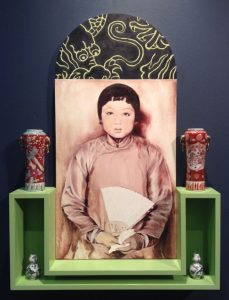
Hung Liu – Fan
View the works in the exhibition here.
Turner Carroll is very pleased to host a solo exhibition of work by Hung Liu in anticipation of her upcoming retrospective in 2021 at the Smithsonian’s National Portrait Gallery. This exhibition celebrates Liu’s accomplishments and features work from throughout her career: from her iconic portraits of Chinese subjects to her dandelion series and on to her current body of work that is inspired by Dorothea Lange’s Dust Bowl-era photographs.
Online Virtual Exhibition | Keep the Ball Rolling
Walk through our VR exhibition!
Adaptability is key to finding happiness, and Turner Carroll has adapted to a new way of hosting exhibitions to bring you happiness during this unusual, homebound time. We are thrilled to bring you our first 3-D, interactive, virtual exhibition. Our exhibition Keep the Ball Rolling takes its title from Judy Chicago’s Resolutions series work by the same name. The exhibition features vibrant works that inspire mind, body, and heart. Please enjoy our guided tour feature, which allows us to walk you through the exhibition as if we’re walking through the gallery together. You can also click on the View/Purchase on our Website button next to each artwork, to read our descriptive analysis of the specific artwork. Enjoy the exhibition and please send us your comments and suggestions on our new platform, at info@turnercarrollgallery.com.
View the works in the exhibition on our web page here.
Online Virtual Exhibition | Burned: Women and Fire
Etsuko Ichikawa: Making a Pyrograph
Special Judy Chicago exhibition and event to benefit Through the Flower
July 26, 2020 from 2-5 pm at Through the Flower Art Space in Belen, NM
Burned: Women and Fire
Artists include Judy Chicago, Monica Lundy, Karen Yank, Etsuko Ichikawa, Meridel Rubenstein, Jami Porter Lara, Julie Richard Crane, Hung Liu and Lien Truong.
Artwork in the exhibition may be viewed here.
Fire is one of the most potent symbols in human history. It purifies, illuminates, destroys, and transforms. “Mother Earth” has fire in its core. That magma—hot, molten rock—is an igneous rock. The name igneous comes from the word ignis, which means “fire” in Latin. This fire sporadically pushes its way through cracks in the earth’s crust and erupts from volcanoes, burning everything in its path to create a way for new life to emerge from the magma. Wildfires act in the same way, coming by surprise, expanding exponentially, and consuming fuel in its path, while simultaneously opening some types of seed pods for future growth.
The first civilizations in the Near East revered forces of nature and their enormous and only modestly predictable impact on daily life. Later, they would be personified as deities. Many ancient cultures saw fire as a supernatural force: Greeks maintained perpetual fires in front of their temples, Zoroastrians worshiped and regarded fire as pure wisdom that destroys chaos and ignorance, and Buddhist cultures practiced ritual cremation to purify the body upon its release from the physical world.
When early religions began transferring attributes of forces of nature to specific deities, many cultures equated fire rising from “Mother Earth” with archetypes of women. The Sumerian goddess Lilith had a fiery ability to control men. In Egypt, the serpent goddess Wadjet used fire like a snake spitting venom to burn her enemies. In the Philippines, Darago was the warrior goddess associated with volcanoes. Roman goddess Feronia was associated with the energy of reproduction and the fire beneath the earth’s crust. These ancient goddesses were fierce and powerful, and they used fire as their tool.
As male rulers took political, religious, and economic power through organized conflict, the diminution of women’s power was the result. Instead of depicting women as independent forces of nature, biblical authors described them pejoratively as harlots and sinners. These authors used fire to symbolize the guiding presence of God, and Abrahamic religions embraced the destructive power of fire as the wrath of God. In the Torah/Old Testament story of Eve, her bold pursuit of knowledge was as terrifying as a fiery natural disaster. When Eve was in the Garden of Eden she “saw that the tree was good for food…and a tree to be desired to make one wise, she took the fruit thereof, and did eat, and gave also unto her husband with her.” “The woman whom thou gavest to be with me, she gave me of the tree, and I did eat” Adam said, as he successfully blamed the woman for his choices and actions. The male God then cursed all women for Eve’s independent decision-making and disobedience: “I will greatly multiply thy sorrow…and thy husband…he shall rule over thee.”
Those words of condemnation, and words like them in other male-dominated institutions, attempted to change societal perception of women from personification of fire, and its natural ability to create and destroy, into the scorned embodiment of sin. Just as early Roman Christians built churches on top of pagan temples and later placed the orb and cross atop obelisks they looted from ancient Egypt, governments usurped female power by forcing a narrative of male moral, intellectual, and physical superiority. These institutions took archetypically “female” fire as their own symbol, using it as their weapon to control and limit women’s minds, bodies, and potential. Examples of this include doctors in pharaonic Egypt using fire to cure “hysteria” by forcing the uterus (hystera) upwards. Caught between the English and French monarchs, Joan of Arc was burned alive in 1431 despite being credited previously for the French victory at the Siege of Orleans. In early modern England, women were burned at the stake as a legal punishment for a range of activities including coining and mariticide. In 1652 in Smithfield, Prudence Lee confessed to having “been a very lewd liver, and much given to cursing and swearing, for which the Lord being offended with her, had suffered her to be brought to that untimely end.” She admitted to being jealous of and arguing with her husband. For this, she was burned at the stake, as were thousands of other women. In the late 1850s, The Industrial Revolution produced gauzy new fabrics that when made into funnel-shaped dresses, ignited instantly upon being touched by a spark. Their flammability made them death traps for women, preventing them from safely doing ordinary things men could do, such as lighting a match, standing close to a fire, or smoking a cigarette, lest they be burned alive.
Tragically, women are still burned to death by men today. In New Zealand in 2011, a groom doused his bride with flammable liquid, set her on fire, and left her by the side of the road to die so he could obtain a higher dowry from another. In 2015 in New Guinea, four women were tortured and burned for sorcery. Acid-burning is at an all-time high, occurring from the United Kingdom to Southeast Asia. In India and Pakistan, widows are sometimes burned with their deceased husbands in his funeral pyre, and the highly suspect “kitchen fire” is all too common. In contemporary honor killings, families burn their own daughters and sisters for making unapproved decisions about their own marriage. The United Nations estimates that as many as 5000 women are killed annually world-wide in honor killings. Today, this act is not illegal in such modern nations as Jordan.
It is no wonder the element of fire is ingrained in women’s collective memory. Fire represents women’s power and their torture. In women’s own hands, it is their independent creative spark; in the hands of those who want to suppress them it can destroy their very lives. Burned: Women and Fire features artists who—like the alchemical Phoenix who burns and rises from the ashes anew—integrate their collective experience with fire and burning to create their art.
Tonya Turner Carroll
Santa Fe
January 2020
July 19 – August 9, 2019 | Hung Liu: Catchers
The exhibition showcases Liu’s most recent paintings, primarily of children, inspired by Dorothea Lange’s Dust Bowl-era photography. Liu’s paintings depict children growing up during hard times, struggling to safeguard the joy and innocence of childhood. Though barely able to care for themselves, these children find the compassion to care for each other and for animals. Liu’s exhibition title alludes to her memory of a book she read 50 years prior when she was a student in China–Catcher in the Rye. Like “Catcher” in Salinger’s novel, it is the idealistic child who tries to keep society from falling off the edge into oblivion, both literally and metaphorically.
Hung Liu is no stranger to the loss of childhood. She endured forced “re-education” working 364 days/year in the wheat fields of the Chinese countryside during Mao’s Cultural Revolution. Her own father was placed in prison for fighting against the communists, and her mother destroyed their family photographs to protect them from governmental retaliation. Hung met her father for the first time when she was 46, shortly before he died. Because her own family photographs had been taken from her, Hung has devoted her artistic career to collecting photographs of dispossessed people such as these children, memorializing her adopted “family” in her paintings.
This major exhibition of Liu’s paintings at Turner Carroll foreshadows two highly anticipated Hung Liu retrospective exhibitions at the Ullens Art Center in Beijing (2019), and the Smithsonian Institution’s National Portrait Gallery (2021).
Liu arrived in the U.S. from China in 1984 and embraced the idea of artistic freedom. She had been trained as a Social Realist painter, and pushed the envelope of what was acceptable to the Chinese government from her years at the Central Academy of Art in Beijing. Artist David Hockney noted her tenacity in his China Diaries, in which he wrote Hung Liu’s subject matter “surely would not have been permitted during the Cultural Revolution.” Her painterly style developed as a method of challenging the strict confines of her training in China; her practice of painting evolved to express freedom through washes of color on canvas and drips of paint. From 1984 to 2015, Liu depicted primarily Chinese subjects, from prostitutes and concubines to peasants and laborers, using historic photographic collections as source material to explore the struggles and strength of the people in her own country who were displaced by political or natural forces. Since 2015, when Liu developed an affinity for Dorothea Lange’s Dust-Bowl era photography, she has painted American stories of trial and perseverance.
Opening Reception Friday, July 19, 2019 from 5 to 7pm; brief comments by Hung Liu at 6pm.
Carnwath and Liu in Amazing Stories: Recent Acquisitions at the Palmer Museum
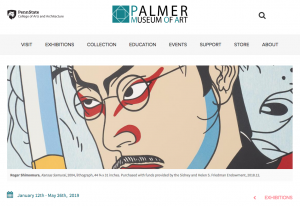
Palmer Museum of Art – Amazing Stories: Recent Acquisitions
“Amazing Stories: Recent Acquisitions” at the Palmer Museum of Art at Penn State highlights a large selection of prints by artists whose work relies heavily on representation and storytelling to explore ethnic identity and stereotypes, multicultural histories, and personal narratives. Artists featured include Turner Carroll artists Squeak Carnwath and Hung Liu, as well as Turner Favorites Claudia Bernardi, Sue Coe, Claudio Dicochea, Leonor Fini, Mimmo Paladino, Roger Shimomura, and Vincent Valdez. Organized by the Palmer Museum of Art. This exhibition runs from January 12 through May 26, 2019. The exhibition may be seen here.
15 January 2019
March 29 – April 22, 2019 | Can’t Lock Me Up
Can’t Lock Me Up: Women Resist Silence
Opening reception Friday, March 29, from 5-7 pm.
Artists include Fatemeh Baigmoradi, Ambreen Butt, Judy Chicago, Jenny Holzer, Hung Liu, Monica Lundy, sheri crider, and Lien Truong.
Artwork in the exhibition may be viewed here.
“When the whole world is silent, even one voice becomes powerful. We realize the importance of our voices only when we are silenced.” Malala Yousafzai, Pakistan
A massive, global problem exists in our shared human history. Since the beginning of civilization, women’s biology has been used against them in attempts to silence them, shame them, and to limit their access to education and power by locking them up literally or metaphorically. Perhaps born from fear of the sheer power women inherently possess in their ability to create new life, society has weaponzied the female body through language, images, and the threat of sexual violence. It’s time to admit this problem exists, examine how society perpetuates it, and do everything in our power to solve it.
Part of the problem is the pejorative language we use to describe aspects of female biology–from menstruation to menopausal hormonal, appearance, and emotional shifts. Women who are bleeding are called “dirty,” “cursed,” and forced to endure “ritual sequestration”—a euphemism for ostracization of women from society during menstruation. In Nepal, women are forced into menstrual huts where they sometimes die. UNICEF, the U.N. child advocacy agency, reports that in Zambia, school attendance becomes less consistent after fifth grade because most girls lack access to feminine hygiene supplies. This keeps women from receiving the education that would help them enrich not only their personal lives, but their entire societies.
Universally, women are called “hags” and “witches” as their aging skin sags and their worth as objects of beauty is diminished. From the second millenium B.C. in Egypt, women were deemed “hysterical” when they displayed emotional behavior connected with monthly hormonal shifts. The Greek physician Hippocrates believed women became “hysterical” when their uterus (hysteron) was not sexually satisfied, and that the only cure for female hysteria was sex. If a woman rejected sex to “cure” her hysteria, the explanation was that she was “possessed” by a “demonic” type of mental illness, for which one cure was fire, as in the later practice of burning a witch at the stake. The Latin word for woman, foemina, is formed from fe and minus, that is she “who has less faith.” As Phyllis Chesler points out in her Women and Madness, it comes as no surprise that due to these associations of insanity and deviance with female hormones, many patients in early mental institutions were menopausal women. Artist Monica Lundy explores this trend of locking women up and silencing them by labeling them “crazy” for behavior such as “flirtation” and “disobedience.” She paints images of female inmates of a Roman mental institution, using coffee, charcoal, and burned paper.
Another part of the problem is the way images have been used throughout history to reinforce these pejorative stereotypes of women. Female nudes in museums rarely look the viewer in the eye, but are depicted with a diverted, subjugated gaze instead. When female public figures express their legitimate outrage, they are quickly discredited with photographic images featuring them with mouth open, finger wagging, wild-eyed demonic rage. It’s as if when a woman uses her power and her voice, she is seen as the embodiment of Lilith herself. Conversely, when men express anger, aggression, pain, or sadness in images, they might be thought of as powerful, passionate, assertive, professional, or sensitive. Thus, the way we have historically used images discredits women even before they speak, shunning them into silence and perpetuating belief in their inferiority.
Perhaps our biggest societal problem is how women have been historically subjugated through sexual violence. Sexual violence is a gender-based hate crime; the UN describes it as “a problem of pandemic proportions. Statistically, at least one out of every three women around the world has been beaten, coerced into sex, or otherwise physically or emotionally abused in her lifetime.” Forms of such sexual abuse include female infanticide, forced prostitution, genital mutilation, forced abortion, honor killings, dowry violence, rape, domestic violence, sexual harassment, marital rape, stoning, flogging, sexual trafficking, forced marriage, denial of medical care, and sexual slavery. These crimes hurt women psychologically, sexually, and physically and leave them feeling broken, fearful for their safety, and in pain.
Though 189 countries ratified the Convention on the Elimination of All Forms of Discrimination Against Women in the 1980s, horrific crimes against women persist. Soraya Manutchehri was buried to her waist then brutally stoned to death in Iran for “being an inconvenient wife.” Pakistani teenager Malala Yousafzai was shot in the head for speaking out for girls’ right to attend school. More than 400 Nigerian schoolgirls were abducted from their school and forced to marry their captor-assaulters. 7000 Yazidi women and girls have been repeatedly sold as sex slaves in ISIS-controlled Syrian markets, and over half of them are still enslaved. Myanmar’s troops systematically raped Muslim Rohingya women to spread terror and force them to flee the country. Rwandan military raped virtually every surviving Tutsi female over the age of 12 in the Rwandan genocide. Femicide is still prevalent in China; according to a current UN report, femicide is often conducted in “the most cruel means” such as stabbing, beating and strangling, which, it said, reflects misogyny. “This means there has not been success in changing the cultural patterns that devalue women and consider them disposable, allowing for a social permissiveness in the face of violence and its ultimate expression, femicide,” the report said. Artist Hung Liu has devoted her entire artistic career to preserving the memory of these otherwise forgotten, nameless women forced into sexual submission.
In the U.S., rape culture is rampant as the media normalizes sexual violence. Popular culture dismisses the profane, insulting words U.S. President and sexual assault perpetrator Donald Trump uses to describe the way he habitually assaults women as merely “locker room talk.” U.S. citizens tolerate their President using language such as “low IQ individual,” “unhinged,” “nasty,” and “blood coming out of her…everywhere” to vilify women. Through the normalization of this type of misogynistic and violent language, the objectification of women’s bodies, and the glamorization of sexual violence, we perpetuate a society that disregards women’s rights and safety.
Why do women remain silent about these human rights tragedies they endure? How could it be that women could have helped elect someone so dangerous to their safety and dignity? Equally confounding: why would an undeniably accomplished, confident, qualified first woman presidential candidate–stay silent while a man far less formidable than herself invaded her debate space? Why was she pushed to publish her chocolate chip cookie recipe to gain public trust? Because we accept social norms demanding women act with such courteous and deferential self-control. From a young age, boys’ rowdiness is tolerated, while girls are rewarded with praise and good grades for their silence and social composure.
What can we do to solve this problem of subverting and silencing women? We can take every opportunity to speak out about the ways women have been enslaved mentally, metaphorically, physically—throughout the world. Rather than just describing the atrocities, we can demand action on their behalf, and we can take action ourselves, no matter how small. We can call out societal degradation, discrediting, and sexual domination of women when we perceive it. Turner Carroll is proud to exhibit women artists from throughout the world who speak the truth for themselves and their sisters who might have a harder time finding their voice. Artists like Fatemeh Baigmoradi, whose photographs with controversial members burned out of them help us remember a tragic history. Artists like Hung Liu, who has dedicated her life to painting disenfranchised women as quasi-imperial, transforming their pain into beauty, telling their stories with a grace they did not experience in their lifetimes. Artists like Lien Truong, who uses traditionally feminine media such as painted silk, 24-karat gold thread, and embroidery to tackle international issues of domination and resistance in her paintings. Artists like Judy Chicago and Jenny Holzer, who had to be loud and brash with their words and images when they started expressing these sentiments even before feminist art was defined. Artists like Sheri Crider, whose art expresses transformation of incarcerated women, and Monica Lundy, whose paintings tell the stories of women placed in mental institutions simply for not being silent.
It is our responsibility as human beings to speak up and act out on behalf of the women who make up half the world’s population. In the words of 2018 Nobel Peace Prize winner and Yazidi former ISIS sex slave Nadia Murad: “If we do not want to repeat cases of rape and crimes against women, we must hold to account those who have used sexual violence as a weapon to commit crimes. I do not seek sympathy, I seek action.”
Tonya Turner Carroll
Turner Carroll Gallery
March, 2019
SFMOMA Acquires Hung Liu’s Entire “My Secret Freedom” Series
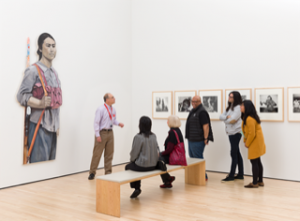
Hung Liu – Avant Garde at SFMOMA
We are very happy to announce that SFMOMA has acquired Hung Liu’s entire “My Secret Freedom” series. This body of 36 still extant paintings was recently shown at SFMOMA from March through September 2018 in an exhibition curated by Nancy Lim. While attending art school at the Beijing Teacher’s College from 1972 through 1975, Hung would slip into the countryside and paint on the sly. The great irony of this body of work is that these small pieces were simply scenes of everyday Chinese life, they were also radical images as they did not represent the proscribed images of peasants, and soldiers, and workers. Painting just to paint—and not in the service of the state—was a dangerous proposition. So while there were initially hundreds of these little paintings, only 36 exist today.
In addition, the acquisition of the “My Secret Freedom” series was made in conjunction with a gift from Hung Liu of an important early self-portrait “Avant-Garde” from 1993. The painting is included in the current SFMOMA exhibition “Art and China after 1989: Theater of the World” organized by the Guggenheim Foundation in conjunction with Guggenheim Senior Curator, Alexandra Munroe, Ullens Center for Contemporary Art Director, Philip Tinari and National Museum of 21st Century Arts Artistic Director, Hou Hanru. The exhibition is on view at SFMOMA through February 24, 2019.
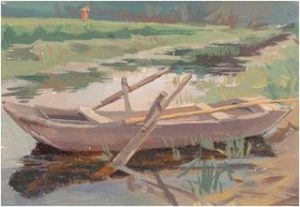
Hung Liu – My Secret Freedom 22
21 December 2018
Hung Liu at SFMOMA
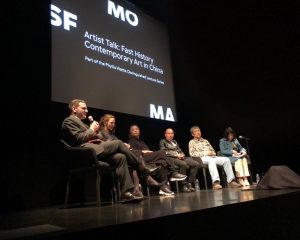
Hung Liu Artist Talk at SFMOMA – 8 November 2018
Tonya Turner Carroll at the Morehead-Cain Foundation Alumni Forum 2018
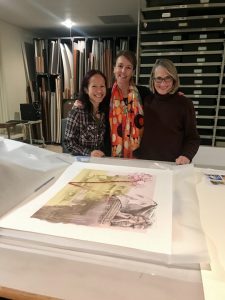
Lien Truong, Tonya Turner Carroll, and Katie Ziglar with artwork by Hung Liu.
On October 19 Tonya Turner Carroll and Ackland Art Museum director Katie Ziglar hosted a panel called “A Culture of Impact.” The panel was a part of the Morehead-Cain Foundation Alumni Forum 2018. Both Tonya and Katie were Morehead Scholars at UNC-Chapel Hill.
The panel considered how interacting with art as a collector, viewer, or philanthropist allows one to learn about the world in a different way; and how collectors can further their impact by being stewards of that art and learning. It featured the art of Hung Liu, whose work is in the permanent collection of the Ackland Museum, and the art of Lien Truong, a former student of Hung’s and current Assistant Professor of Art at Chapel Hill.
31 October 2018
October 26, 2018 | Hung Liu Endowment
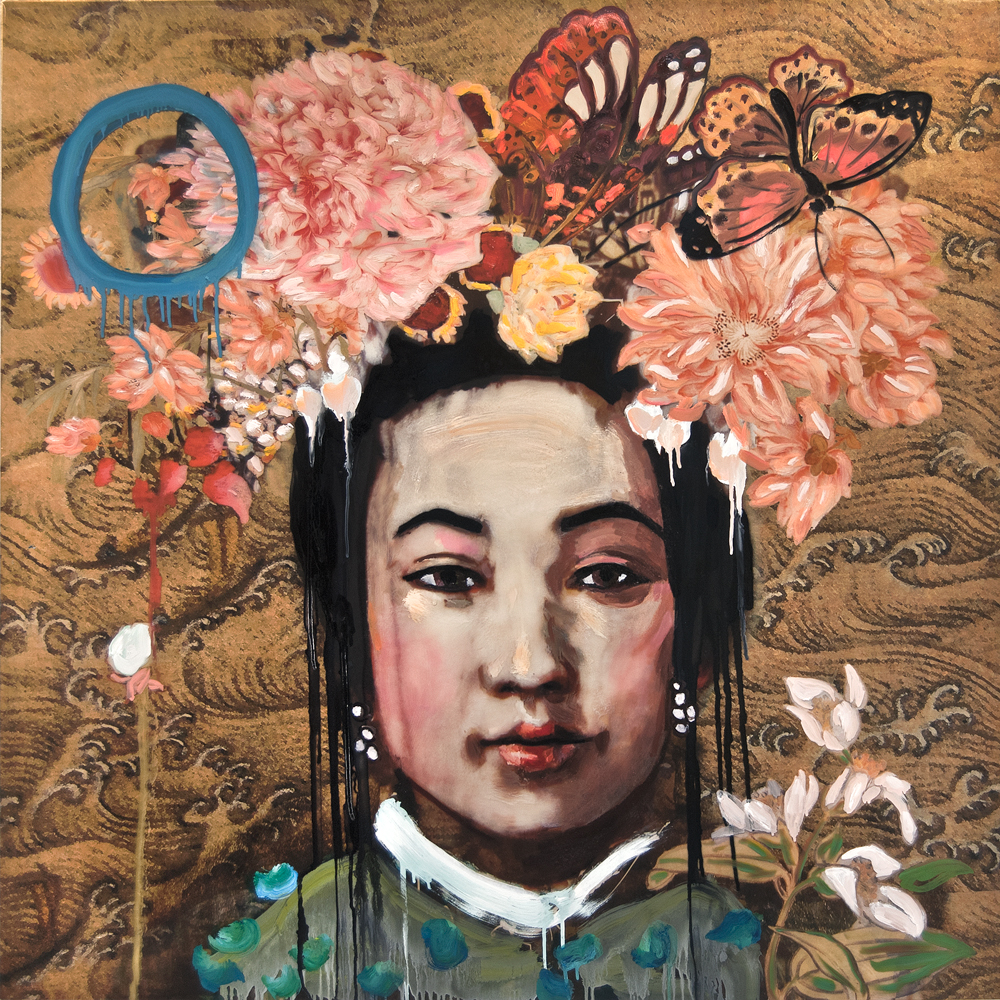
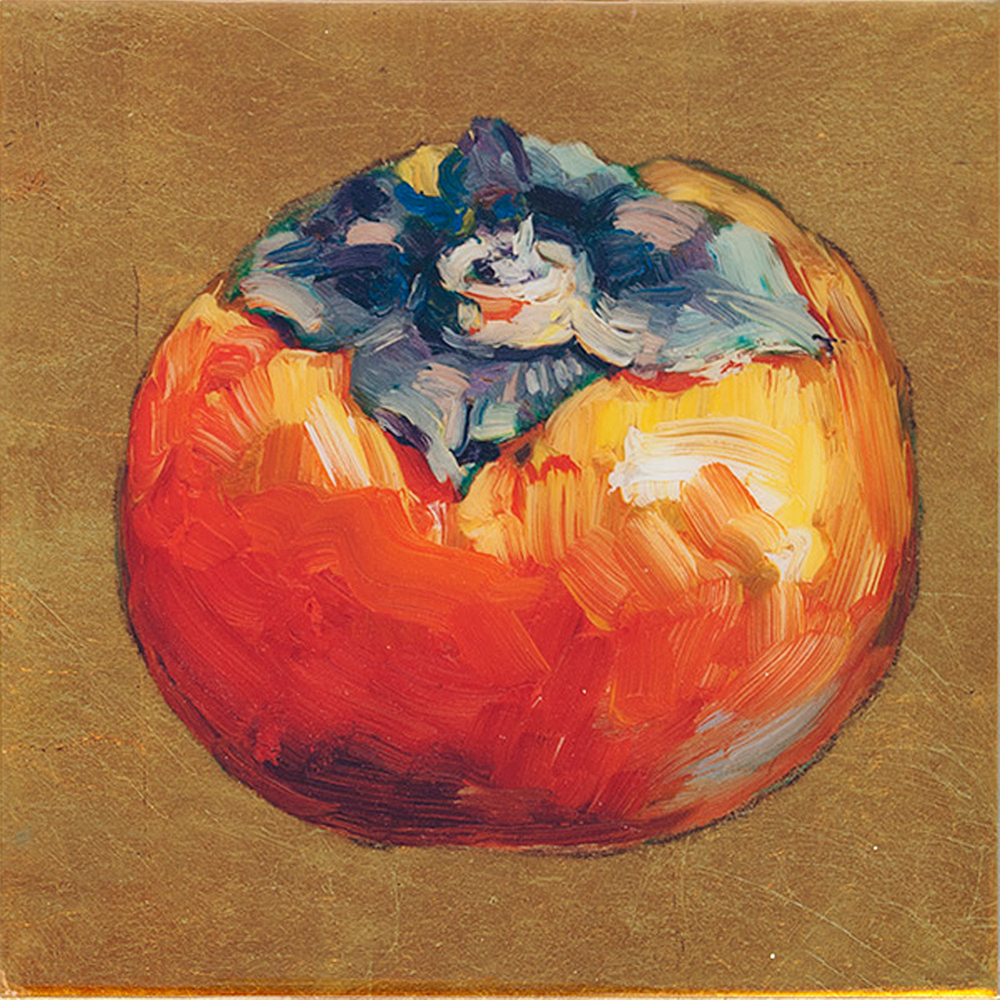
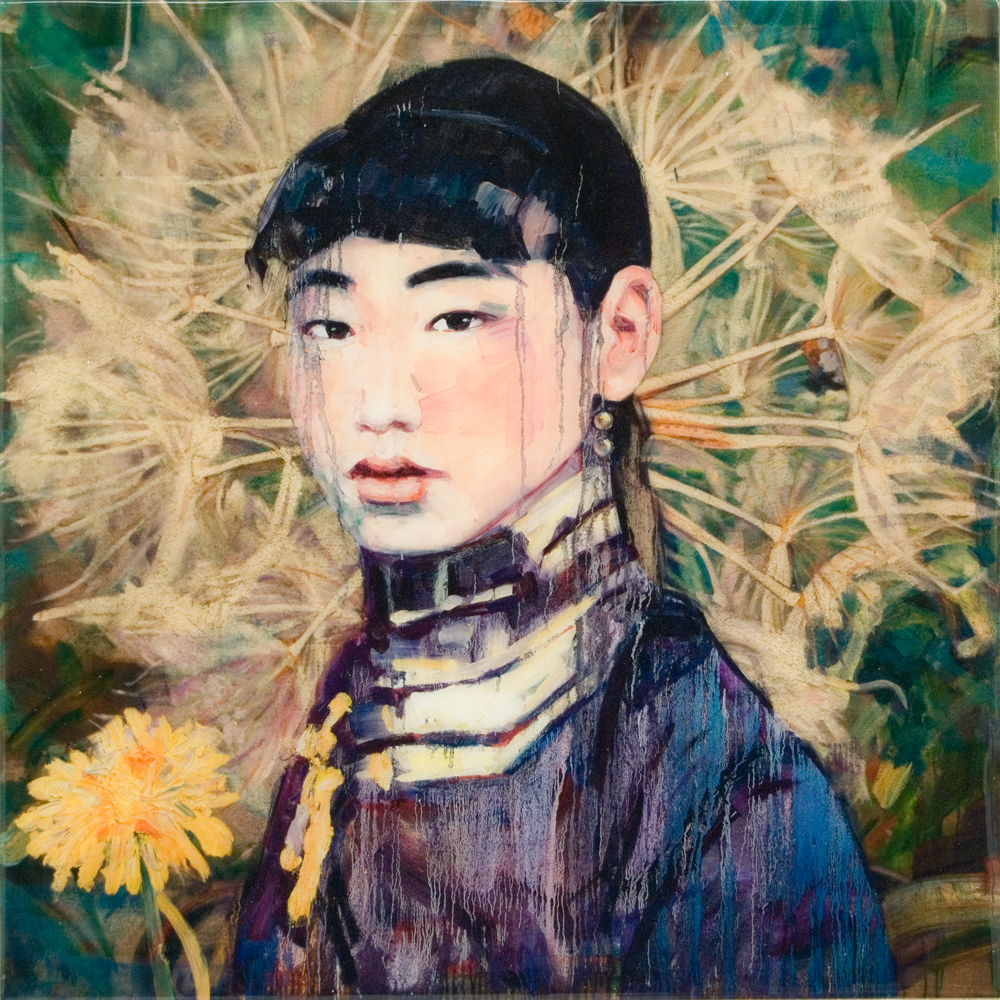
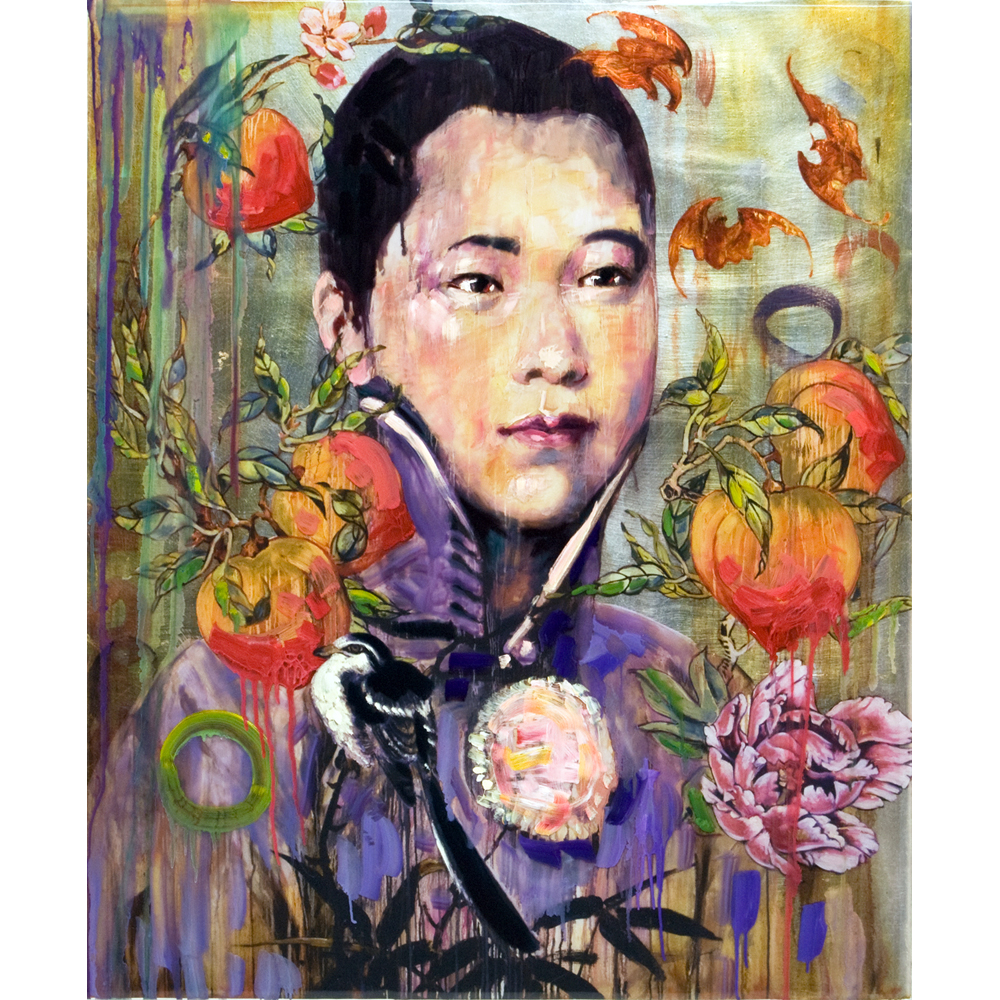
Opening Reception Friday, October 26, 5-7pm
Turner Carroll Gallery is pleased and excited to announce the Hung Liu/Trillium Award and creation of a scholarship through the Jordan Schnitzer Museum of Art. Twelve pieces have been curated by Turner Carroll and will be sold to fund this endowment. The award and scholarship will be given annually to an MFA student at the University of Oregon.
This collection presents a unique opportunity to acquire a significant Hung Liu mixed media work while seeding the award endowment. This endowment connects the planned major exhibition of Hung’s work—accompanied by a comprehensive monograph—with the acquisition of 55 Hung Liu artworks by JSMA for their permanent collection.
The idea for this award grew out of Hung Liu’s personal trajectory as an artist. She knows the tribulations of being a committed painter struggling financially and culturally. She is an immigrant from China who arrived in the U.S. to begin her graduate studies in art at UC San Diego with two suitcases and $20. Because she had amazing mentors in her graduate program, including the great Alan Kaprow, Hung has been able to reach the highest tier of contemporary art. Her paintings are now in the collections the Metropolitan Museum of Art, SFMoMA, and the Whitney Museum of American Art among others. In addition, the National Portrait Gallery is currently working on her retrospective that will open in May 2021.
Hung comes from a long line of professors. Her grandfather, mother, husband, son, as well as Hung, herself, worked in academia, and have taken pride in the strong relationships they developed with their students. Hung wants part of her legacy to be not only the artwork she leaves behind, but also the impact she has on talented young artists. Via the Hung Liu/Trillium Award and scholarship, Hung’s work will live on by fostering students’ ability to fund their education and practice to fulfill their artistic visions. Hung chose the JSMA as the recipient of this endowment due to its founding by and commitment to strong women leaders, as well as its impeccable collection of Asian art.
The purchase of these impressive works will add not only great beauty to your collection, but will also make a lasting contribution to civilization by supporting future artists like Hung who are determined to make the world a better place.
Work in the exhibition may be viewed here.
For more information and high resolution images, please visit https://turnercarrollgallery.com/press-area/ or info@turnercarrollgallery.com
Hung Liu in Witness: Themes of Social Justice
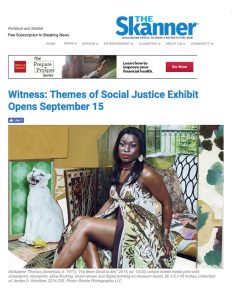
Hung Liu in the exhibition “Witness: Themes of Social Justice in Contemporary Printmaking and Photography from the Collections of Jordan D. Schnitzer and His Family Foundation”
Hung Liu joins 40 nationally and internationally recognized artists, including Enrique Chagoya, Lalla Essaydi, Mildred Howard, Hung Liu, Nicola Lopez, Wendy Red Star (Apsáalooka), Roger Shimomura, Kara Walker, and Marie Watt (Seneca), among others in an important new exhibition presented by the Hallie Ford Museum of Art in Salem, Oregon. The show “Witness: Themes of Social Justice in Contemporary Printmaking and Photography from the Collections of Jordan D. Schnitzer and His Family Foundation.”
Drawn from the vast collections of Jordan D. Schnitzer and His Family Foundation, the exhibition explores issues of race, identity, and social justice in contemporary printmaking and photography from one of the legendary print collections in the United States. An article in The Skanner quotes Jordan D. Schnitzer “The theme represented in this exhibition, social justice, is the most important discussion all of us in the country need to have with each other. We continue proudly support the Hallie Ford Museum and our numerous collaborations together.”
The exhibition runs through 18 December 2018.
23 August 2018
Hung Liu in the News
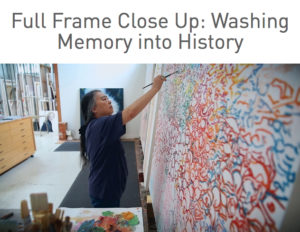
Hung Liu – CGTN interview
May brings more updates and news for Hung Liu and her career. Presented As part of Pacific Standard Time: LA/LA, the exhibition “Winds from Fusang: Mexico and China in the Twentieth Century” at the Pacific Asia Museum in Pasadena is on view December 8, 2017 through June 10, 2018. The exhibition “is the first major exhibition on the heretofore unexamined influence of Mexican art and artists on the development of art in China in the twentieth century. The exhibition, its accompanying publication, and dynamic public programs will present the trans-Pacific ties between the creative communities of Mexico and China in the last century.”
Hung was also interviewed by the China Global Television Network. The CGTN attempts to report on the intersection of the world’s two largest economies. In that spirit, the interview and video focuses on the mixed identity of Hung’s dual Chinese and American identities.
15 April 2018
Stranger in a Strange Land: Art of California at SFMoMA
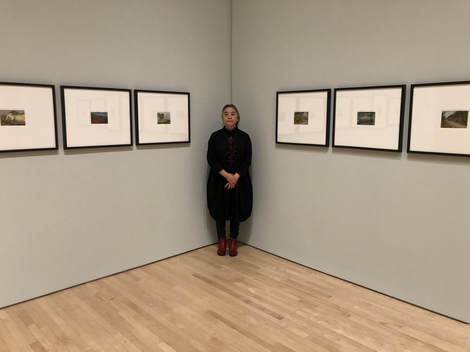
Hung Liu – Stranger in a Stringe Land at SFMoMA
Hung Liu is a part of an important exhibition at the San Francisco Museum of Modern Art titled “Stranger in a Strange Land: Art of California Works by Hung Liu, Charles Wong, and Martin Wong The exhibition runs from March through September 2018.
Nancy Lim, Assistant Curator of Painting and Sculpture at SFMOMA writes “In 1968, under Mao Tse-Tung’s sweeping “Down to the Countryside Movement,” twenty-year-old Hung Liu was resettled in rural China for proletariat reeducation. Far from the urban comforts of Beijing, she labored in the fields, toiling alongside other “sent-down youth” for the creation of a Communist utopia. Upon her return to the capital in 1972, she enrolled in university as an art student – but chafing under the state’s exclusive demands for propaganda, she escaped each day to Beijing’s desolate outskirts. There, in peace, she painted the landscapes of her self-named “Secret Freedom” series, delighting in these humble studies of color, composition, and form. But her modest subjects, such as a toilet rather than a rosy-cheeked Mao, incited questions from her roommate: Did they “sing great songs for the Party”? Why was she painting them? What was her political status? Liu ignored this surveillance and made more than five hundred works, keeping faith, year after year, in the joy and fierce necessity of free expression.”
15 April 2018
Recent Press for Hung Liu and “Women Who Work”
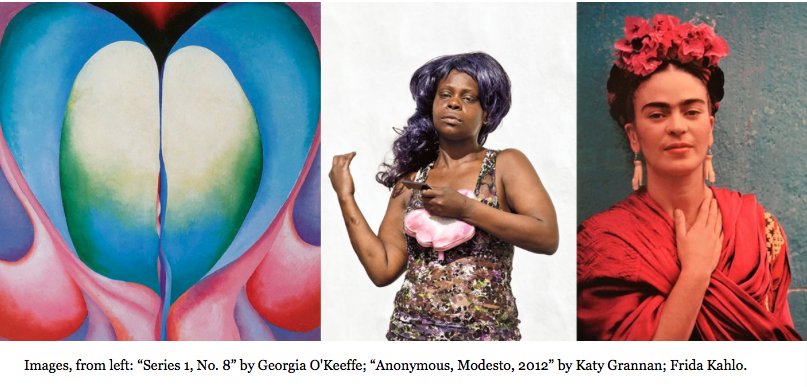
ArtsWest Initiative project – Women Who Transformed Work in the West
Hung Liu has received a lot of great press recently. A particularly well-written article in the Santa Fe New Mexican, Pasatiempo by Grace Parazzoli details lovingly beautiful bits from Hung’s life. One particular detail stands out in Hung’s describing her grandmother’s shoe-making for the family.
The Lily, a publication of The Washington Post, had an article on the project #5WomenArtists by the National Museum of Women on the Arts to name five women artists. NMWA digital editorial associate Emily Haight put Hung Liu with Frido Kahlo, Amy Sherald, Alma Woodsey Thomas, and Lalla Essaydi.
Recently, an ArtsWest Initiative project sponsored by Stanford University and the Minnesota Street Project published a list “The Most Influential Women Artists of the American West in the 20th Century.” The list included 34 amazing artists including Hung Liu, Ruth Asawa, Kara Walker, and a host of New Mexico women artists such as Georgia O’Keeffe, Agnes Martin, Juane Quick-to-See-Smith, Deborah Butterfield, and others.
A short piece featuring the “Photo of the Day” appeared in the Santa Cruz Sentinal referencing the exhibition “Spoken/Unspoken: Forms of Resistance” at UC Santa Cruz. The show includes work by Hung Liu, Ruth-Marion Baruch, Irene Carvajal, Jo Hanson, Laura Kina, Yolanda Lopez, Irene Lusztig, and Yoko Ono, along with artifacts about Angela Davis and posters from the Guerrilla Girls.
Coverage also extended to Hung’s Loveland Museum/Gallery installation “Transformation” that included over 200,000 fortune cookies, and a great article in the Albuquerque Journal on Hung’s show with us in March 2018.
A link to our exhibition is here.
16 March 2018
March 16 – April 4, 2018 | Hung Liu: Women Who Work (In Conjunction with Liu’s Exhibition at National Museum of Women in the Arts)
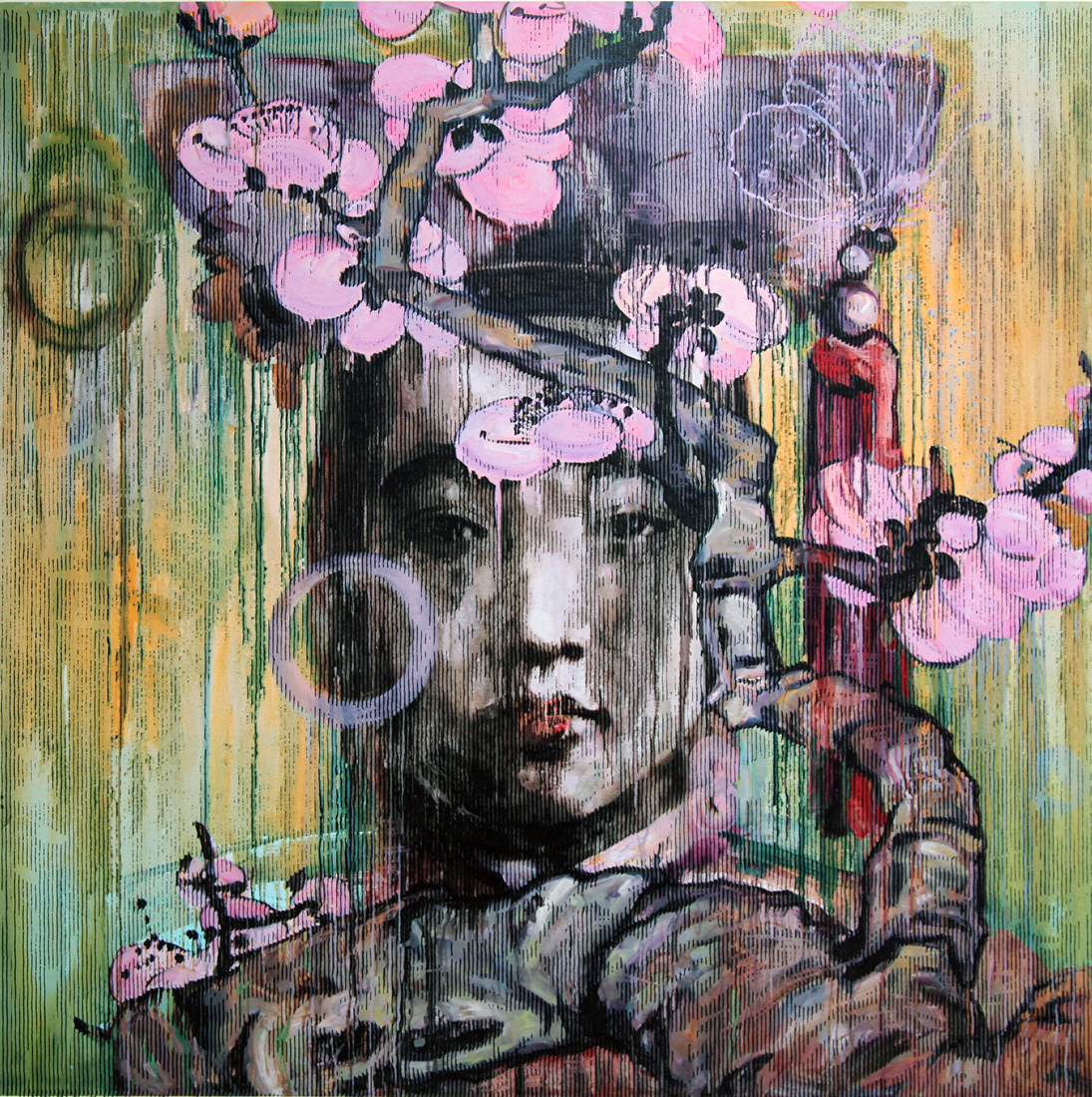
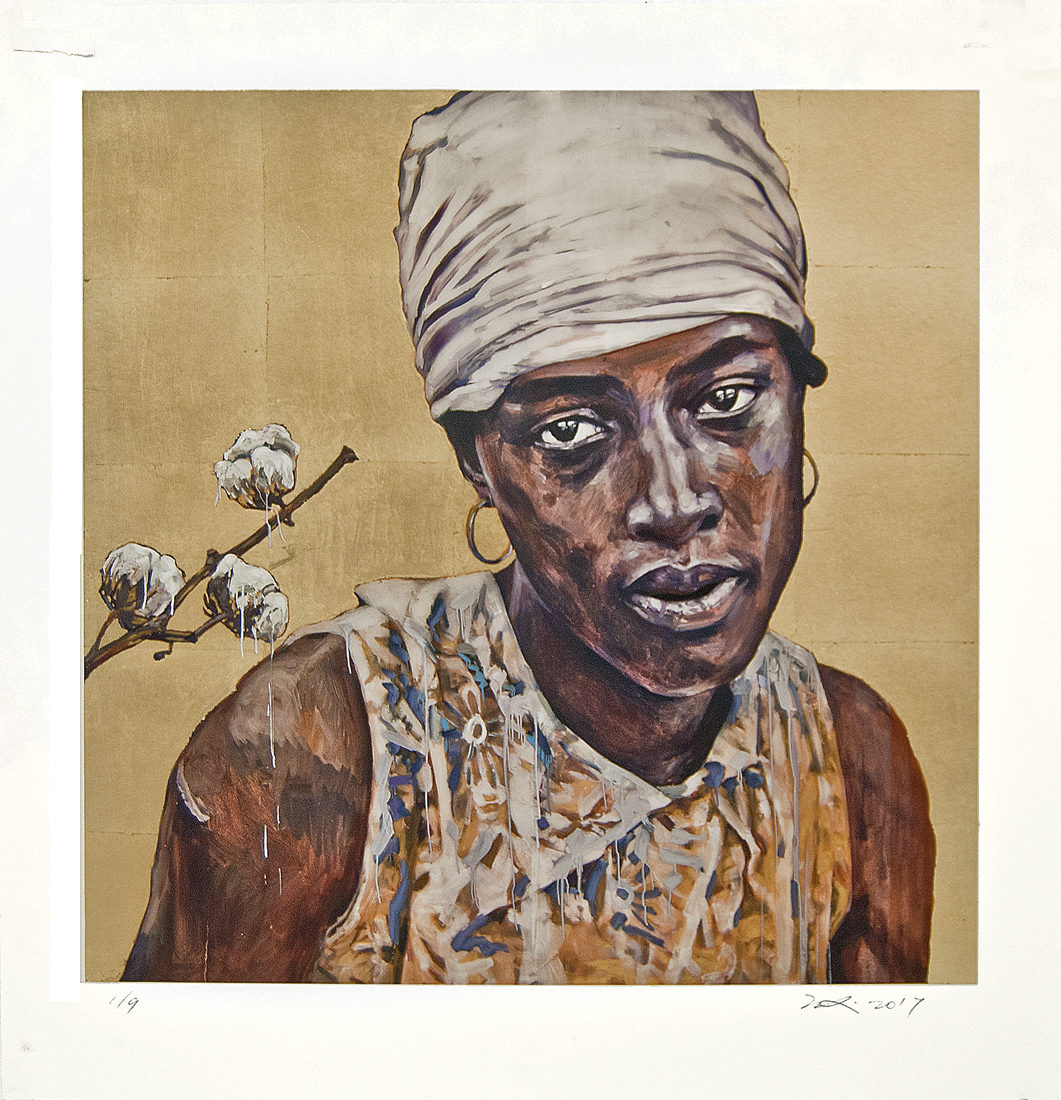
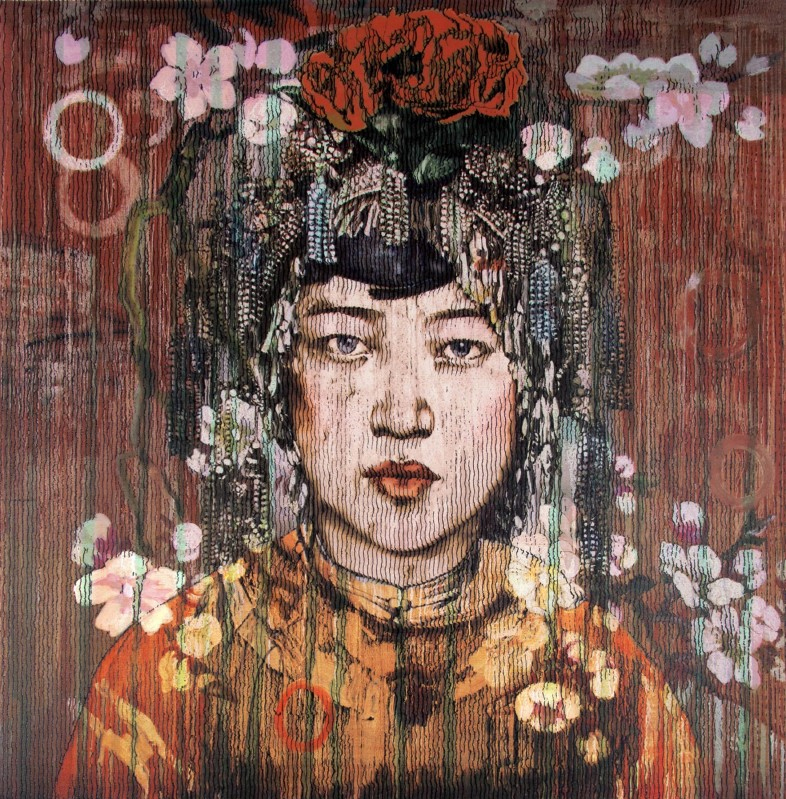
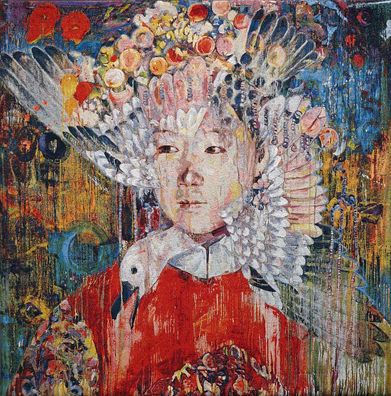
Opening Reception Friday, March 16, 5-7pm
Hung Liu is well known throughout the United States, Europe, and China, for her heart-wrenching imagery of laborers. Liu was trained as a muralist at the Central Academy of Art in Mao’s China, and many of the now thoroughly famous Chinese pop contemporary artists regard her as their “big sister” in the art world. Liu’s works until 2016 were quasi-icons for the Chinese workers and concubines whose spirits might be forgotten if not preserved in her works. These personae were so dear to her because she labored alongside them in the wheat fields for four long years during the Cultural Revolution.
Liu later immigrated to the United States, leaving her entire family and all she knew behind in China. She had to start over, with only two suitcases and $20. A testament to her dedication to her art, her paintings, tapestries, prints, and installations can now be seen in more than 40 major museums in the U.S., from the Metropolitan Museum of Art to the San Francisco Museum of Modern Art. With the same determination Liu harnessed to create images that are universally poignant, she mastered every artistic medium she could explore, in her constant effort to get her message of human compassion into the world. Thus, Liu embraces lithography, etching, monotype, jacquard tapestry, photography, and experimental printmaking as part of her art practice. These editioned works are equally compelling as her paintings, and as a tribute to Liu’s mastery of these media, she received the National Award for Lifetime Achievement in Printmaking.
The National Museum of Women in the Arts is hosting a solo exhibition of Hung Liu’s prints and tapestries from January through July of this year. Turner Carroll Gallery has represented Liu’s works for more than a decade, and is thrilled to present the Turner Carroll exhibition Hung Liu: Women Who Work, in conjunction with Liu’s exhibition at the National Museum of Women in the Arts. This milestone exhibition is comprised of decades of Liu’s editions, including her prints on paper, duotone photographs backed with gold leaf and mounted to panel, lithographs, and monumental jacquard tapestries. Turner Carroll is excited to share Liu’s breadth of skill with art enthusiasts, and will have materials on hand to help viewers explore the various media and symbolism Liu employs.
The National Museum of Women in the Arts writes of its exhibition: we “invite viewers to explore the relationship between the artist’s multi-layered paintings and the palpable, physical qualities of her works on paper. ‘To make her prints, Liu (b. 1948) uses an array of printing and collage techniques, developing highly textured surfaces, veils of color, and screens of drip marks that transform the figures in each composition. Describing printmaking as poetry, she emphasizes the spontaneity of the layering process, which allows each image to build organically with each successive layer’.”
Work in the exhibition may be viewed here.
For more information and high resolution images, please visit https://turnercarrollgallery.com/press-area/ or info@turnercarrollgallery.com
Kala Art Institute Presents Hung Liu: Daughters of China
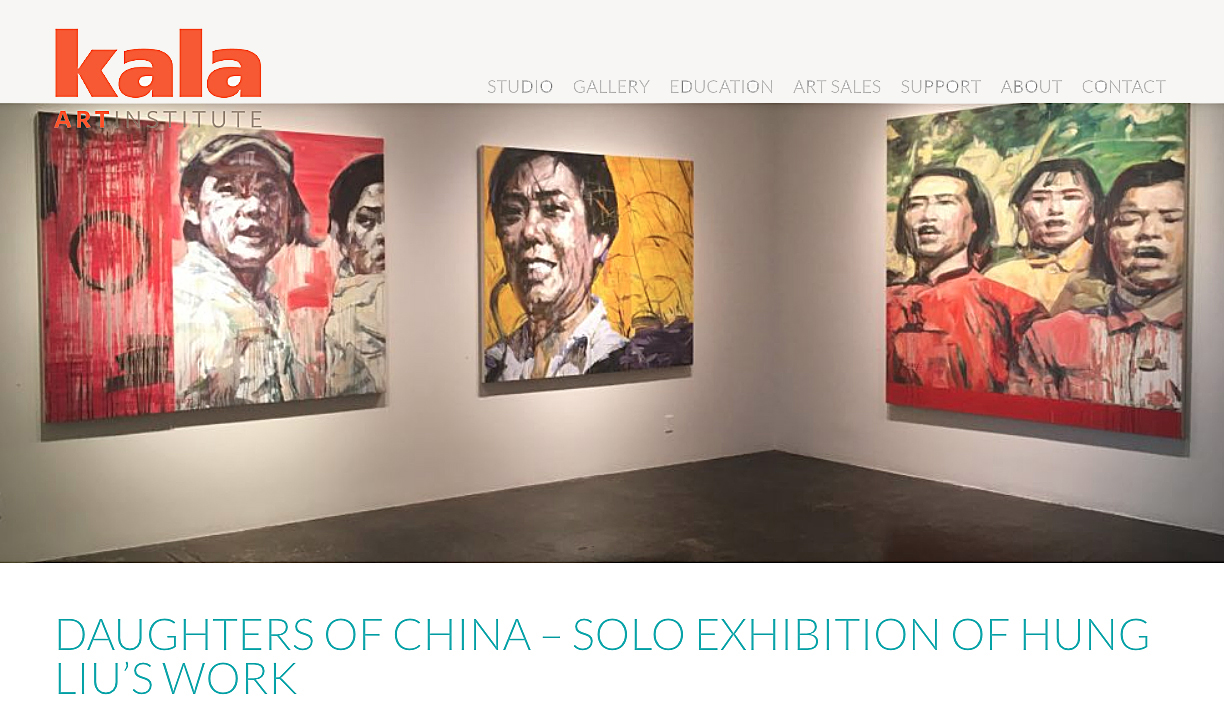
Kala Art Institute Presents Hung Liu: Daughters of China
Hung Liu has a major exhibition at the Kala Art Institute in Berkeley, California. The exhibition runs from October 19, 2017 to January 20, 2018. Curated by Peter Selz and Sue Kubly, the Kala website says about the exhibition “Known for paintings based on historical Chinese photographs, Hung Liu’s subjects over the years have been prostitutes, refugees, street performers, soldiers, laborers, and prisoners, among others. As a painter, Liu challenges the documentary authority of historical Chinese photographs by subjecting them to the more reflective process of painting. Much of the meaning of Liu’s painting comes from the way the washes and drips dissolve the documentary images, suggesting the passage of memory into history, while working to uncover the cultural and personal narratives fixed – but often concealed – in the photographic instant. Washing her subjects in veils of dripping linseed oil, she both “preserves and destroys the image.” Liu has invented a kind of weeping realism that surrenders to the erosion of memory and the passage of time, while also bringing faded photographic images vividly to life as rich, facile paintings. She summons the ghosts of history to the present. In effect, Liu turns old photographs into new paintings.”
In conjunction with this exhibition the City of Berkeley declared Hung Liu day with this pronouncement: “Several times a year, the City of Berkeley, honors extraordinary artists and art institutions in our city. On Tuesday, December 19th between 6:00 pm and 6:30 pm the city will honor Hung Liu and Kala Art Institute. You are invited to attend the ceremony in the City Council Chambers at 2134 Martin Luther King Jr. Way.”
Two fantastic articles about the exhibition and Hung appeared shortly after the show opened. Nick Stone authored this great piece in SquareCylinder and Marcia Tanner penned this piece in BerkeleySide.
18 January 2018
Hung Liu In Print at the National Museum of Women in the Arts
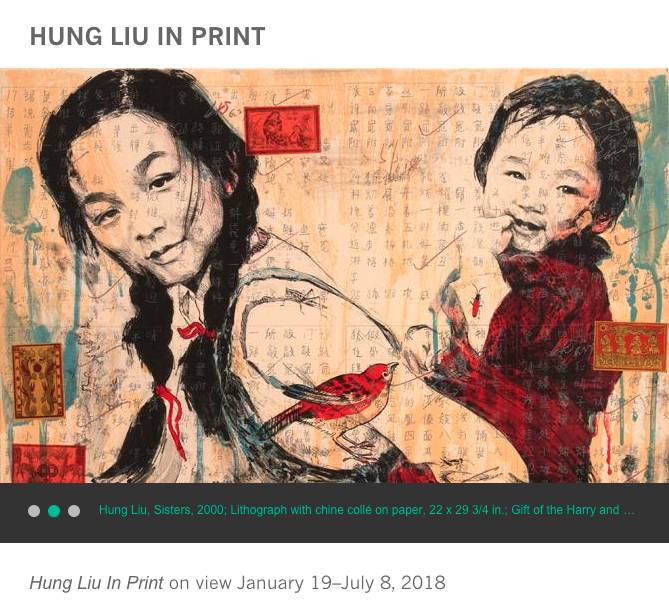
Hung Liu In Print at the National Museum of Women in the Arts
Hung Liu and her work on paper are the subjects of a new solo exhibition opening 19 January 2018 at the National Museum for Women in the Arts in Washington, D.C. According to the museum web site “Hung Liu In Print invites viewers to explore the relationship between the artist’s multi-layered paintings and the palpable, physical qualities of her works on paper…Best known as a painter, Liu ably translates the “weeping realism” that characterizes her canvases into the medium of prints. This focus exhibition highlights selected prints from the collection of the National Museum of Women in the Arts as well as the artist’s related tapestry designs.” The exhibition runs from 19 January through 8 July 2018.
There are two great articles on the exhibition. A fabulous piece in January 26, 2018 The Georgetown Voice by writer Nancy Garrett uncovers and elevates “the most frequently ignored figures in Chinese history: women.” Also, the article in the New York Times by Peter Libbey has Hung on the same page as Barack Obama and his official portrait by Kehinde Wiley.
A link to the exhibition is here. A link to the excellent NMWA press release is here, as well.
16 March 2018
Hung Liu Named One of the Most Influential Artists of the Last Century
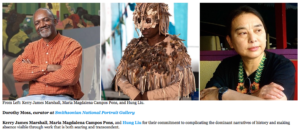
Hung Liu Named One of the Most Influential Artists of the Last Century by Artnet
Hung Liu Named One of the Most Influential Artists of the Last Century
A recent news article on artnet brought even more attention to Hung Liu. The article was predicated on the question “Who was the most influential artist in the last 100 years? It’s not an easy question, and there is no perfect answer. But a group of leading curators, artists, critics, and dealers were equal to the challenge, weighing in with their choices for artists whose legacies have defined the last 100 years and continue to reverberate in the work of artists today. The resulting list (below) is nothing short of a survey of modern art history, ranging from conceptual art forefather Duchamp to the video pioneer Nam June Paik to modern masters of abstraction like Jackson Pollock and Agnes Martin—and, of course, Jeff Koons.” Quite incredible company to be a part of!
A link to the article is here.
1 November 2017
Hung Liu’s Return to China for 100th Anniversary of Experimental High School
Special Guest Blog Post, Written by Jeff Kelley upon Hung Liu’s return to China for the 100th anniversary of her high school.
100th Anniversary
Experimental High School Attached to Beijing Normal University
(formerly Girls Middle School Attached to Peking Normal University)
北京师范大学附属实验中学 (北京师范大学附属女子中学)
September 2, 2017, by Jeff Kelley
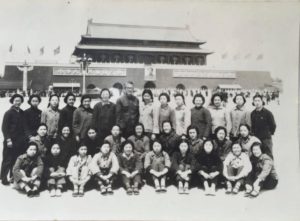
Hung Liu, second row, third from left, circa 1965
Hung Liu has always cherished her experiences as a student at the “Girls Middle School Attached to Beijing Normal University.” (The Chinese are famous for clunky bureaucratic names.) A girls’ boarding school so elite that even Mao‘s daughters went there, the campus was/is about a mile west of the Forbidden City (Mao’s daughters were picked up and dropped off everyday). Hung has often talked with fondness about dorm life, camaraderie among the girls, the passion of teachers, and of the sense that the Experimental High School was a gateway to a modern China as well as to the nation’s classical, ancient past.
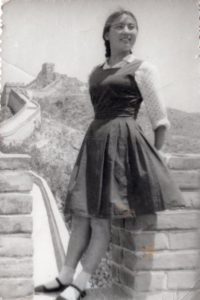
Hung Liu visiting the Great Wall
Hung loved her teachers, especially Mrs. Xia Xiurong, who taught Chinese literature. Earning excellent grades, she also loved the process of learning.

Hung Liu, back row, center-left
This sense of enthusiasm, however, was shattered in 1966 with the beginning of the Cultural Revolution. It was in Hung’s own school that teenaged Red Guards first rebelled, replacing subjects like history, literature, the arts, and even the sciences with the practice of revolution. Mao appealed to the youth of China to destroy anything (and anyone) corrupted by capitalism or tradition, and they did so with the zealous self-righteousness of impassioned teenagers. In August, 1966, campus Red Guard leader Song Binbin lead fellow students in the beating of the school’s Principal, Bian Zhongyun, to death.

Principal Bian
Bian was the first teacher killed in the Cultural Revolution, and her slaying led to further killings of educators throughout China by the Red Guards. Hung was not at school that day, and, because of her family history (and personal disposition), she was neither a Party member nor a Red Guard, but she was shocked that so many of her classmates – girls receiving the best education in Beijing – could turn so quickly from a class of elite students to a mob of violent revolutionaries.
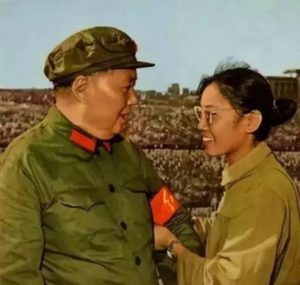
Binbin with Mao
Two weeks later, Song Binbin became famous throughout China when she was photographed pinning a red armband on Mao in front of one million people in Tiananmen Square. In 2014, Song Binbin, who earned a doctorate at MIT, apologized publicly for her role in killing Bian Zhongyun, describing her shame at having “not protected” the school’s teachers as a source of “life long regret.” She also returned for the 100th anniversary.
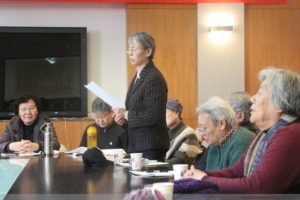
Song Binbin’s apology
Hung recalls that between 1966 and 1968 no classes were offered – they practiced revolution instead. In 1968, she was sent, as were so many others, to the countryside to undergo “proletarian re-education” as a peasant farmer, not returning to Beijing until 1972. During the 70s, she studied to become an art teacher at Beijing Normal University. For the next several years she taught art to middle school students. In 1979 she was admitted to the Central Academy of Fine Arts in Beijing – the nation’s best art academy. Finally, Hung came to the US where she studied at UCSD. Still, one gets the sense that her enthusiasm for learning – her love of art, literature, and the sciences (she wanted to become a doctor before the Cultural Revolution) – was kindled in high school, and that she cherished her experience there, despite the murder of Principal Bian.
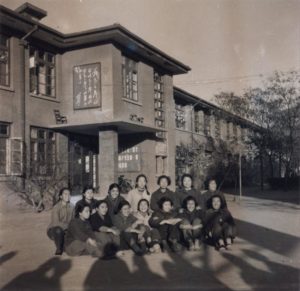
Hung Liu, sitting, second from left, at the Experimental High School, circa 1964
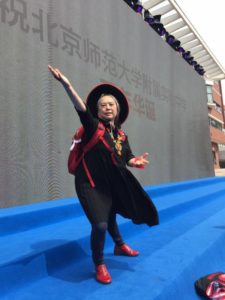
At the reunion…
On September 3rd, this year, Hung returned to Beijing for the 100th Anniversary of the founding of the Experimental High School. Thus, nearly 50 years after she and her classmates were sent to the Chinese countryside, they came together again to celebrate the centennial of their school. Perhaps most movingly, their literature teacher, Mrs. Xia Xiurong, now in her 90s, attended the reunion. Her students were overcome with emotion at seeing her, especially Hung. Mrs. Xia told Hung (true story) that she had been her best student, whose written compositions were always memorable. Sometimes in life the yawning gap between the past and present collapses like an accordion, so that, as in this case, student and teacher are back together, if only for a moment. Despite the violence and madness of the late 60s in China, Hung and her classmates were able to re-wire history in terms of their solidarity as a generation, their love of learning, and the selflessness and sacrifice of their teachers. Perhaps they are comforted by the knowledge that history – so coveted by the zealots of a revolutionary era – now belongs to the (once) young women who cherished learning over ideology.
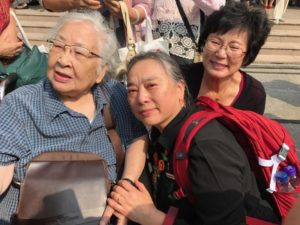
A tearful moment with literature teacher Xia Xiurong
Women Warriors: Portraits by Hung Liu
 Dates: August 5, 2017 – November 26, 2017
Dates: August 5, 2017 – November 26, 2017
Kalamazoo Institute of Arts, 314 S. Park Street, Kalamazoo, MI 49007 (269) 349-7775
Adults: $5 KIA members: free Students with ID: $2 Youth 12 & under, school groups, and active military: Free
Contact & More Info:
http://www.kiarts.org/page.php?menu_id=75
Phone: (269) 349-7775
Female strength in the face of persecution is the thread running through this exhibition of 20 mixed media, painted, and photographic works by Hung Liu. Her imagery shows the power and perseverance of Chinese women throughout history “from imperial concubines to warriors of the Red Army and survivors of the Cultural Revolution (like herself). Her paintings and prints often make use of anonymous Chinese historical photographs, particularly those of women, children, refugees, and soldiers. This exhibition presents visions of determined, strong, beautiful warriors “fragmentary glimpses of unknown women, enveloped within new lives of beauty and dignity.
Santa Fe New Mexican: Rotation and Revolution—Hung Liu at Turner Carroll Gallery
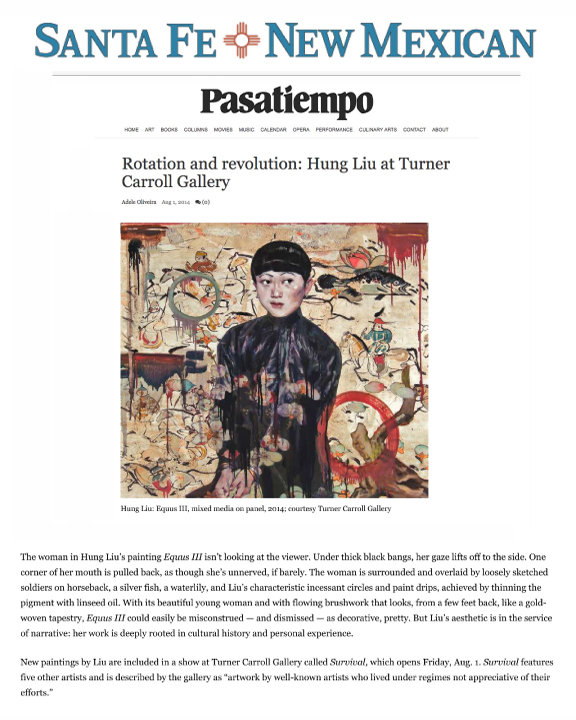
Rotation and revolution: Hung Liu at Turner Carroll Gallery
The Santa Fe New Mexican article on Hung Liu Turner Carroll exhibition describes how she grew up in China under the harsh rule of Mao. She labored in the fields, along with the women she paints. Her goal is to give these women lives unlike the lives they led in reality. She gives them lives of beauty fit for an empress. Liu layers paint upon gold leaf and resin layers, creating a regal portrait of women who were regal in their spirits, if not their realities. She does this in order to show the sanctity of each human spirit, and to illustrate the fact that all people are the same, no matter what class to which they are born. Such is the case with Liu’s work throughout her career, from her earliest paintings created in China to the most recent works she has painted and which hang in numerous prestigious museum collections in the United States.
The woman in Hung Liu’s painting Equus III isn’t looking at the viewer. Under thick black bangs, her gaze lifts off to the side. One corner of her mouth is pulled back, as though she’s unnerved, if barely. The woman is surrounded and overlaid by loosely sketched soldiers on horseback, a silver fish, a waterlily, and Liu’s characteristic incessant circles and paint drips, achieved by thinning the pigment with linseed oil. With its beautiful young woman and with flowing brushwork that looks, from a few feet back, like a gold-woven tapestry, Equus III could easily be misconstrued — and dismissed — as decorative, pretty. But Liu’s aesthetic is in the service of narrative: her work is deeply rooted in cultural history and personal experience.
New paintings by Liu are included in a show at Turner Carroll Gallery called Survival, which opens Friday, Aug. 1. Survival features five other artists and is described by the gallery as “artwork by well-known artists who lived under regimes not appreciative of their efforts.”
- Adele Oliveira
June 28 – August 20, 2017 | Hung Liu: American Dream
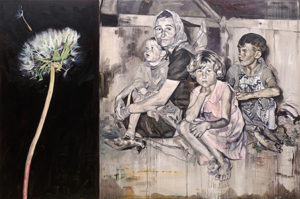
Hung Liu: Dirty Pink
Hung Liu American Dream Opening Reception Friday, July 7, 5-7pm Hung Liu’s career has been built upon her signature portrayal of imagery from her Chinese homeland, yet she has made her home in the United States since 1984. In her newest body of work, Liu explores her American identity through the iconic imagery of Dust Bowl Era (particularly Dorothy Lange’s) photography.
Born in China to a captain in Chiang Kai-shek’s Nationalist Army, Hung Liu’s father was captured by Communist forces and imprisoned in a labor camp. Hung and her mother fled to Beijing, where they survived Mao Zedong’s Great Leap Forward and the mass famine it induced. Hung’s mother destroyed all family photos depicting Hung’s father in order to protect Hung from the Mao regime, which viewed Nationalists and their families as enemies of the people. Hung thus came to treasure family photographs, whether they depicted her own family or someone else’s.
When Hung was sent to the countryside for proletarian “re-education” at age 20, toiling in rice and wheat fields 364 days/year for four long years, a friend asked Hung to safeguard her camera. During that time, Hung took secret photographs of her fellow Chinese laborers. These photographs became her collective family album; they are the basis for her iconic portraits in which she has memorialized these workers’ humanity for the last thirty years of her painting practice.
Liu became interested in Lange’s imagery through their shared passion of capturing the dignity of their subjects. Historically, Liu’s work has carried the themes of migration, labor, oppression, and marginalization, and these themes continue through and tie together this newest series. Through her art, Liu recognizes the power inherent in the struggle of Dust Bowl and Great Depression Era migrant workers, field hands, immigrants, and disenfranchised minorities. Vivid strokes of vibrancy crack through what is a predominantly muted color palette as if to breathe new life into the pale ghosts of the dispossessed. Hung speaks of the Americans in her paintings as her ancestors, even though she is from China: “we adopt each other’s children, why shouldn’t we adopt each other’s ancestors, as well?”
This exploration is meant to act as a magnifying lens for the current global refugee crisis, driven by war, ecological disaster, and famine. Caught amid a global political climate of growing fear and distrust, Hung Liu makes a potent statement about our place as moral citizens of common history.
Opening Reception Friday, July 7, 2017 from 5 to 7pm
[n.b. that this event takes place in Santa Fe]
Santa Fe New Mexican: Rotation and Revolution—Hung Liu at Turner Carroll Gallery
August 5 – November 26, 2017 | Hung Liu: Women Warriors, at Kalamazoo Institute of Art
Hung Liu Women Warriors Kalamazoo Institute of Arts Exhibition is made possible with assistance from Turner Carroll Gallery in Santa Fe.
Female strength in the face of persecution is the thread running through Women Warriors: Portraits by Hung Liu, opening at the Kalamazoo Institute of Arts August 5.
The exhibition contains 20 mixed-media, painted, and photographic works that show the power and perseverance of Chinese women throughout history–from imperial concubines to warriors of the Red Army and survivors of the Cultural Revolution–like herself.
Hung Liu has exhibited widely throughout the U.S. and internationally. Her paintings and installations are in collections including the Whitney Museum of American Art, Metropolitan Museum of Art, the Smithsonian American Art Museum, the Kemper Museum of Contemporary Art and the San Francisco Museum of Modern Art. She is a two-time recipient of a National Endowment for the Arts painting fellowship, and is Professor Emerita of Studio Art at Mills College, Oakland, CA.
Liu was born to a captain in the Nationalist Army of Chiang Kai-shek in Changchun, China in 1948. Her father was captured by Communist forces, and imprisoned in a labor camp. When Hung was 11, she and her mother fled to Beijing, where she survived Mao Zedong’s “Great Leap Forward” and the mass famine it induced. To protect the family, Liu’s mother destroyed all the photographs he was in.
Sent into the countryside at 20 for “reeducation” Hung Liu worked every day for four years as a farm laborer. It was there she began to secretly take photographs with a friend’s camera–some of which are seen in her current work.
“This exhibition presents visions of determined, strong, beautiful warriors–fragmentary glimpses of unknown women–enveloped within new lives of beauty and dignity,” says KIA Executive Director Belinda Tate.
Hung’s work often makes use of anonymous Chinese historical photographs, particularly those of women, children, refugees, and soldiers. Many are based on photographs of Chinese concubines and prostitutes she discovered in an old shop when she returned to China in 1990. Hung says “the majority of girls were sold by poor families. Girls were not as precious as boys; they could not carry on the family name.”
Liu points out that photography in China, originally used by the royal court, commodified these oppressed concubines even as it gave them a place in history alongside the highest strata of society. She strives to give these anonymous women a new life of beauty, often employing gold or silver leaf along with symbols of rebirth, immortality, wisdom, and good fortune between layers of resin. The resulting images are amalgamations of beauty, history, and transformation.
Viewers may wonder about the circles and drips in Hung Liu’s paintings. The circle references immortality and infinity, and functions as the period at the end of a Chinese sentence. In school in China, Hung’s instructor would circle his favorite part of her work. She suggests the drips represent the blurring of memory, reinforcing our responsibility to remember the past clearly: every day is Memorial Day, every day is Thanksgiving.
An opening celebration for the exhibition is set for Friday, August 4, 5-8 pm at the museum, as part of August Art Hop. Admission is free.
This exhibition is organized with the assistance of Turner Carroll Gallery, Santa Fe, New Mexico, and supported in Kalamazoo by the Joy Light East Asian Art Acquisition and Exhibition Fund. It will be on view in the museum’s Joy Light Gallery For Asian Art.
About the Kalamazoo Institute of Arts
The Kalamazoo Institute of Arts believes the visual arts are for everyone, and that they inspire, transform, and fulfill. Chartered in 1924 as private non-profit organization, the KIA offers opportunities to explore, enjoy, and create art. With more than 4,700 fine artworks in its permanent collection, the museum presents collection-based and touring exhibitions in 10 long-term and changing galleries. The Kirk Newman Art School hosts four terms of community-based art classes for all ages.
A link to the exhibition at KIA is here.
Santa Fe New Mexican: Rotation and Revolution—Hung Liu at Turner Carroll Gallery
Hung Liu – American Dream
hungLiuAmericanDreamJuly2017-new
Turner Carroll Gallery Hung Liu American Dream Exhibition features Hung Liu’s most recent paintings. These paintings are based on the Dust-Bowl era photography of Dorothea Lange and other FSA photographers.
Hung Liu is undoubtedly one of the most revered contemporary painters in the U.S. as well as in China, with works included in top museum collections such as the Metropolitan Museum of Art, The National Gallery of Art, The Whitney Museum of American Art, San Francisco Museum of Modern Art, and many others. It is with enormous excitement that Turner Carroll presents to you Hung’s newest paintings in which she focuses on the struggle, perseverance, and ultimate transcendence of Depression-Era America. I believe these paintings are among the most artistically significant Hung Liu has created in her long career.
Liu was born in China to a captain in Chiang Kai-shek’s Nationalist Army; her father was captured by Communist forces and imprisoned in a labor camp. Hung and her mother
fled to Beijing, where they survived Mao Zedong’s Great Leap Forward and the mass famine it induced. Hung’s mother destroyed all family photos which included Hung’s father in order to protect Hung from the Mao regime, which viewed Nationalists and their families as enemies of the people. Hung thus came to treasure family photographs, whether they depicted her own family or someone else’s.
Hung was sent to the countryside for proletarian “re-education” at age 20, and worked in rice and wheat fields among China’s downtrodden, 364 days/year, for four long years. A friend asked Hung to safeguard her camera during that time, and Hung took secret photographs of the Chinese people alongside whom she toiled. These photographs became her collective family album; they are the basis for her iconic portraits in which she has memorialized these workers’ humanity for the last thirty years of her painting practice.
In recent years, Hung Liu became fascinated with American Depression-Era photographs. It’s not surprising Liu feels an affinity for the migrants, women, and children whom Farm Security Administration (FSA) photographers like Dorothea Lange captured so intimately. Like the Americans in the photographs, Hung was a laborer who left family members behind and migrated to find a better life. Hung is, herself, like the proud mother in Lange’s “Breast Milk,” and she is also a determined child in “American Dream” and “South.”
Liu has found kindred, artistic visionaries in Dorothea Lange and other Depression-era photographers. Just as Hung has always given the downtrodden new lives of beauty in her paintings, these American photographers canonize the dignity of human perseverance in their photographs. As David M. Roth writes of Liu’s current body of American Depression-Era paintings, “These are respectful tributes, not re-interpretations…Liu…consistently wrings transcendence from austerity.” Part of the transcendent aspect of these paintings lies in the way Liu electrifies the figures with multi-colored outlines. Hung describes these bright outlines as “hope, coming from the cracks between things”—almost like a halo of the human spirit.
When recently asked by a museum group why she chose to paint American, rather than Chinese subjects, Hung responded “we can adopt each other’s children, so why can’t we adopt each other’s ancestors?” This one statement, for me, sums up the true essence and quintessential importance of Hung Liu’s work. She paints the shared struggle of humanity, and transforms that struggle into the most sublime beauty.
Tonya Turner Carroll
June 2017
Santa Fe New Mexican: Rotation and Revolution—Hung Liu at Turner Carroll Gallery
Hung Liu Scales of History at Fresno Art Museum Extended to 28 April 2017
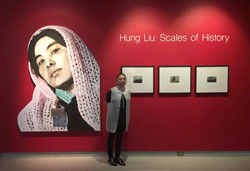
Hung Liu Scales of History
This exciting exhibition features Hung’s most recent work inspired by the time and images of the American Dust Bowl, as well as a thoughtful presentation of her work from the 1990s and 2000s, and even earlier works from the mid-1970s. These earliest paintings are small works of oil on paper, painted sub-rosa as they do not represent authorized images of immediately pre- Cultural Revolution China. Hung refers to the series as her Secret Freedom paintings; a terrible irony as the subject of most of these paintings is the beauty of the countryside, devoid of people.
Hung Liu Speaks at San Francisco Women’s March Speech
Hung Liu San Francisco Women’s March Speech
Saturday, January 21st, 2017
I was born in China in 1948, near the end of the civil war between the Nationalists and the Communists. My father was a captain on the Nationalist side, and we lived in Changchun, a city under siege by Communist forces. During the 150 days of that siege, nearly 150,000 people starved to death. Many tried to leave, but were caught in a no-man’s-land between the two armies. The only way to survive was to flee, so my mother and her older sister, along with my uncle, my father, and my grandparents, tried to escape – I was 6 months old.
When I was six years old, my mother told me a story about that journey that I have never forgotten. She said that while fleeing the fighting around Changchun with countless other refugees – with no food and under fire – our family passed by a river. Sitting alone on the riverbank was a baby. The baby’s mother had set it down and stepped into the river’s rushing water. Nobody picked up the baby. Everyone just kept walking. I asked my mother if she would ever have drowned herself and abandoned me by the river. She looked at me and said, “I don’t know.”
In 1968 – at the age of twenty – I was sent to the countryside for proletarian re-education during the Cultural Revolution. I worked as a peasant 360 days a year for four years, mostly growing wheat and corn. I remember one day looking up from the field and seeing an airplane high overhead, cutting silently through the sky. I wondered where it was going, and if I would ever be able to go there too.
After long days in the fields, the only escape was into the pages of books, most of which were politically dangerous. I hid them under my pillow, and my friends and I would secretly pass them between us. They included Chinese translations of “The Rise and Fall of the Third Reich” by William Shrier, Victor Hugo’s “Les Miserables,” Balzac’s “The Human Comedy,” and “Jean-Christophe,” by Nobel Prize winner Romain Rolland.
“Jean-Christophe” repeats the legend of Saint Christopher, the patron saint of travelers, who carried people across a dangerous river. One day he carried a small child who was unknown to him, and the child became so heavy, and the river became so strong, that Christopher barely made it across. In Rolland’s telling, it took all night, and as the new dawn broke across the eastern sky, Christopher turned to the child and said: “Here we are! How heavy you are. Child, who are you?” The child replied, “I am the day soon to be born.”
In 1981 I applied for a Chinese passport so I could study in the United States. After making me wait for four years, the Chinese government finally let me go. Meanwhile, it took only four minutes to get my visa from the American embassy in Beijing. My first time on an airplane I flew to San Francisco. I carried $20 and two suitcases. I was 36 years old and I had just crossed the Pacific.
The story of America as a destination for the homeless and hungry of the world is not only a myth. It is a story of desperation, of sadness, of uncertainty, of leaving your home. It is also a story of courage, of sacrifice, of determination, and – more than anything – of hope. There will be many rivers to cross in the months and years ahead, some of them dark and swollen. But we must not become hopeless.
I never knew what happened to that baby by the river. In my heart, I have carried her with me all my life. I am here only because my mother carried me. Now, we must carry each other until a new dawn breaks across the American sky.
March 8 – 31, 2017 | Matri-ART-y: Women’s’ March on Art!
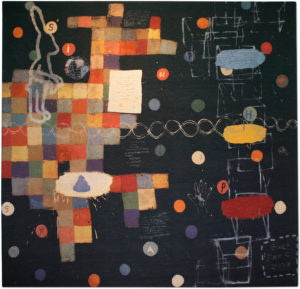
Squeak Carnwath
In a civilization where more than 51% of the population is female, yet 96% of exhibition space is given to men, it’s time for a change. In honor of National Women’s History Month and in celebration of uniquely brilliant female perspective, Turner Carroll features important women artists all month. Artists include an international roster including Nina Tichava, Raphaelle Goethals, Hung Liu, Squeak Carnwath, Karen Yank, Jamie Brunson, Mavis McClure, Jenny Abell, Suzanne Sbarge, Holly Roberts, and Brenda Zappitell.
Opening Reception Friday, March 10, 2017 from 5 to 7pm
[n.b. that this event takes place in Santa Fe]
Hung Liu – We Who Work Pays Tribute to Those Laboring in Santa Cruz and Beyond

Hung Liu – Cottonfield
A lot of Hung Liu’s art starts with an old, black and white photograph from China. Most of the subjects in the photos are anonymous.
“You don’t know anything about this person,” says the Chinese-American artist from Oakland. The anonymity, she explains, gives her the freedom to take something specific and universalize it. “I will never know her name, but her image will be enshrined, in a way.”
Take one photo of an old woman cooking on a big stove that became the inspiration for Luzao (Stove), pictured above. “Definitely, she’s not cooking for herself,” Liu says. “Reminds me a little of my grandma. She made shoes, but she cooked every day, day in, day out.”
Looking for art free of politics? Don’t look here.
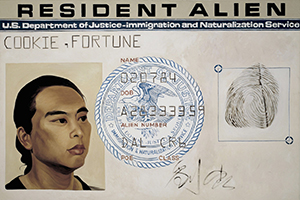
Hung Liu’s “Daughter of China, Resident Alien” includes a large painting in which the artist takes the name “Cookie, Fortune.” Many of her works represent the evaporation of Marxist-Leninist China and her memories of it. (Collection of San Jose Museum of Art)
As the presidential campaign nears its crescendo, the American University Museum at the Katzen Arts Center offers something of a refuge: Hillary Clinton and Donald Trump are entirely missing from the six exhibitions that just opened. Yet the place is hardly free of ideological tumult.
Although quite different in form and content, all of the shows are as politically charged as the latest campaign reports. Included are illustrations by the Black Panther Party’s former minister of culture; a commemoration of a Chilean exile who was assassinated in Washington 40 years ago; and a survey of work by a noted American artist who learned her craft in Mao’s China. The centerpiece of that show, Hung Liu’s “Daughter of China, Resident Alien,” is a pile of some 200,000 fortune cookies atop tracks that evoke the role of Chinese labor in building American railways. In a large painting based on the artist’s green card, she takes the name “Cookie, Fortune.” Many of Liu’s paintings are derived from photos or propaganda-film stills and dissolve realism into abstraction to represent the evaporation of Marxist-Leninist China and her memories of it. But Liu also gazes further into the past to imagine the lives of Chinese Americans long before she arrived here in 1984. One of her pictures is derived from an anti-Chinese cartoon from a 19th-century newspaper. View Rest of Article
April 14 – 17, 2016 | Turner Carroll at the Dallas Art Fair
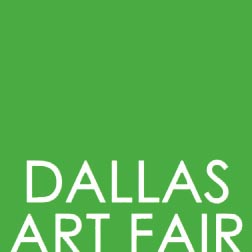
Dallas Art Fair
Located at the Fashion Industry Gallery, adjacent to the Dallas Museum of Art in the revitalized downtown arts district. Featuring new works by gallery artists Fausto Fernandez, Hung Liu, Squeak Carnwath, Drew Tal, Jamie Brunson, Rusty Scruby, Edward Lentsch, Wanxin Zhang, Suzanne Sbarge, Karen Yank, Scott Greene, Holly Roberts, and more! Fair hours are Friday and Saturday, April 15 and 16 respectively, from 11am to 7pm, and Sunday, April 17 from 12pm to 6pm, with an opening preview gala Thursday, April 14.
A link to the Dallas Art Fair is here.
Jan 14, 2016 Fresno Art Museum | Hung Liu: Scales of History
Turner Carroll Artists in the News
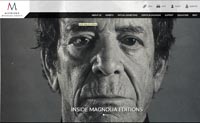
Willy Bo Richardson
Willy Bo Richardson was recently featured in the Latin American edition of Dental Tribune. In addition to having the cover, Willy was interviewed for the magazine by photographer Eric Kroll, A link to the article is here. Inside Magnolia Editions: Collaboration and Innovation opens at the Art Museum of Sonoma County on 12 December 2015. Under the direction of Don and Era Farnsworth since 1981, Magnolia Editions has been on the front lines of innovation, collaboration, and advocacy for timely and pressing social and political issues. The exhibition runs through 7 February 2016. A link to the museum is here.
Turner Carroll artists Rupert Garcia, Squeak Carnwath, Deborah Oropallo, Chuck Close, Enrique Chagoya and Hung Liu all have works represented in the show. Also showing this month is Wanxin Zhang at the San Jose Museum of Art. The show Character Studies: Clay from the Collection runs through 7 February 2016. Wanxin’s work was pointed out “one of a new generation who are continuing this region’s legacy of prominence and innovation in the medium.” The exhibition page of the museum’s web site is here.
Hung Liu at the Asian Art Museum of San Francisco

Asian Art Museum of San Francisco
Artwork by Hung Liu is on display at the Asian Art Museum of San Francisco. She is included in the exhibition First Look: Collecting Contemporary at the Asian. The museum says “For the first time ever, we’re presenting a large-scale exhibition of contemporary highlights from the museum’s collection. These pieces are remarkable on their own, but they also activate the rest of the museum’s collection in compelling new ways, infusing traditional themes and mediums with present-day ideas. The exhibition features artists from Asia as well as from the United States. Yako Hodo abstracts the traditional art of basket weaving, while works by Yang Yongliang and Xu Bing push Chinese ink painting into new media. First Look also features Bay Area favorites like Hung Liu and Zheng Chongbin.” The exhibition runs 4 September through 11 October 2015.
A link to the exhibition is here.
Fresno Art Museum Awards Hung Liu the Distinguished Woman Artist Award 2016

Hung Liu – Dandelion 9B
Congratulations to Hung Liu for receiving this prestigious award from the Fresno Art Museum. The award is granted annually to a woman artist who “has spent thirty or more years in the studio and has created a unique and prestigious body of work.” Past recipients include Turner Carroll favorites Viola Frey, Ruth Asawa and Inez Storer. In addition to the recognition, Hung was awarded a solo exhibition at the museum in the fall of 2016. Lectures and a catalog will accompany the exhibition which runs 23 September 2016 through 8 January 2017.
A link to the Distinguished Woman Artist Award is here.
Hung Liu Acquired by the Jordan Schnitzer Museum of Art

Hung Liu – Visage I
We are very happy to report the acquisition of Hung Liu’s “Visage I” by the Jordan Schnitzer Museum of Art. The museum is located on the campus of the University of Oregon in Eugene. The holds extensive collections of Chinese, Japanese, Korean and American artworks. The painting was purchased from our booth at the Palm Springs Fine Art Fair in 2015. Congratulations, Hung!
Turner Carroll Headed to Palm Springs Art Fair: Feb 12 – 15, 2015
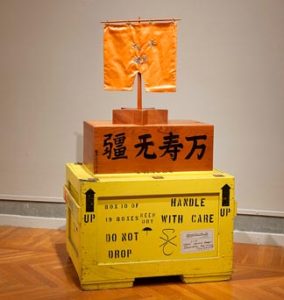
Turner Carroll Headed to Palm Springs Art Fair
Look for us in Palm Springs in February 2015 at the convention center in Palm Springs for the Palm Springs Art Fair. Hung is the subject of a special interview in our booth (#607) with noted Los Angeles art critic Peter Frank from 12 to 12:30 on Friday, 13 February. With Hung Liu’s solo, touring museum retrospective opening less than two weeks later at the Palm Springs Museum of Art, Turner Carroll will position Hung in our booth (#607) and through a special additional installation (booth P4) by Hung, as the star attraction of the fair.
Manuel Neri Visits the Studio of Wanxin Zhang & Hung Liu Wine Labels!
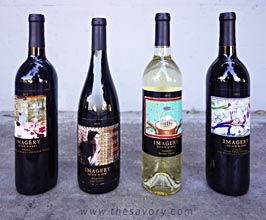
Hung Liu Wine Labels
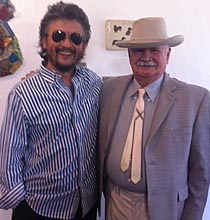
Wanxin Zhang & Manuel Neri
Lots of news from San Francisco of late. Wanxin Zhang sent us this great photo of him with fellow sculptor, and good friend, Manuel Neri. Neri is a long-time favorite of Turner Carroll, and a storied Bay Area artist having studied with art world legends Richard Diebenkorn and Elmer Bischoff. Neri was also a big part of the influential Six Gallery with compatriots Joan Brown, Jay DeFeo and Bruce Conner.
Hung Liu’s wine labels for Imagery Estate Winery are also making the rounds. We found this image on www.thesavory.com. According to the article by Ross Gardiner “The added attention given by the artwork has certainly helped to make them standout from the crowd. Every vintage of every variety has label art commissioned by the winery. Healdsburg-based artist Bob Nugent provided the original paintings, and since then has acted on a full-time basis as the curator. The winery has commissioned over 400 pieces of art to date, and receives over 200 requests per year to show art on their bottles.”
Oct 10, 2014 | Summoning Ghosts: The Art of Hung Liu Opens at the Kemper Museum of Contemporary Art
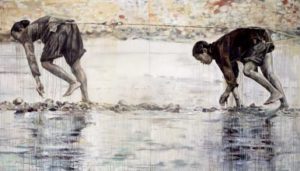 A retrospective of one of the most significant Chinese-American contemporary artists living today, the exhibition Summoning Ghosts: The Art of Hung Liu explores Hung Liu’s life and career through approximately 80 works of art from private and public collections, including two signature works from the Kemper Museum’s Permanent Collection. Organized by Oakland Museum of Contemporary Art’s
A retrospective of one of the most significant Chinese-American contemporary artists living today, the exhibition Summoning Ghosts: The Art of Hung Liu explores Hung Liu’s life and career through approximately 80 works of art from private and public collections, including two signature works from the Kemper Museum’s Permanent Collection. Organized by Oakland Museum of Contemporary Art’s
Senior Curator of Art, René de Guzman, the exhibition is accompanied by a major publication that provides the most comprehensive account of Liu’s body of work to date. Summoning Ghosts: The Art of Hung Liu is on view October 10, 2014–January 11, 2015, at the Kemper Museum of Contemporary Art in Kansas City, Missouri. A collection of rare photographs, and early paintings, all made in China prior to Liu’s immigration to the United States in 1984 will be displayed in the KemperEast gallery. Admission to all Kemper Museum locations is free.
Great Press Coverage for our Exhibition Survival

Igor Melnikov – Borderland
The month of August finds us featuring artists we have shown for a very long time along with artists more recently represented. All have the common experience of growing up in single-party states where they ran up against the authorities. Most have since emigrated from their countries of origin. The show features distinctly humanistic themes that struck a chord with the press. The July 30, 2014, Santa Fe Reporter ran a big, beautiful image by Nele Zirnite, and the Santa Fe New Mexican Pasatiempo features a long article with large color images by Hung Liu going over her personal story. We also got a nod from The Culture Trip out of London as one of the top contemporary galleries in Santa Fe. See the article here.
A copy of the Reporter article is here.
Hung Liu and Squeak Carnwath Update

Hung Liu – Luzao (Stove)
Hung Liu’s etching “Luzao (Stove)” featured in the SF Chronicle review of West Coast Ink at the Sonoma Museum. Link to the article is here. In addition, Hung is in conversation with Peter Selz at University Press Books in Berkeley, California on 16 April 2014. Selz is one of this country’s most prominent art critics and writers, having published 17 books, and held posts at the University of California at Berkeley, and at MoMA in New York.
Also in the news in Squeak Carnwath, who spoke at Mills College. in Oakland, California recently.
Hung Liu in “I, You, We” at the Whitney Museum

Whitney Museum
Arranged into four sections, the show begins with a gallery devoted to “I.” Largely composed of works that address shifting perceptions of personal identity, this space will contain pieces by John Coplans, Robert Gober, Robert Mapplethorpe, Mark Morrisroe, Catherine Opie, Cindy Sherman, Kiki Smith, Carrie Mae Weems, and Francesca Woodman, among others. Though many of the works are self-portraits, others play with notions of individuality such as Jasper Johns’s Racing Thoughts (1983) and Glenn Ligon’s 1990 painting Untitled (I Do Not Always Feel Colored).
Moving into the “YOU” section, the perspective shifts outward as works portray intimate interactions between artists and their subjects. Within this section are Sally Mann’s pair of photographs of her son in Jessie as Jessie and Jessie as Madonna (1990); Jim Dine’s etchings of his wife in Nancy Outside in July IV (1978) and Nancy Outside in July XXI: The Red Frame (1981); and Richard Avedon’s portrait, Bill Curry, Drifter, Interstate 40, Yukon Oklahoma 6/16/80 (1980). Included in this section are also works by Peter Hujar, Alfred Leslie, Hung Liu, Andrea Modica, Shirin Neshat, Jack Pierson, Richard Prince, David Salle, and Lorna Simpson.
A link to the exhibition is here.
Hung Liu Editorial: Recommendations in Visual Art Source
Hung Liu had a great write-up in Visual Art Source this August. The journal VAS gave her solo exhibition at Turner Carroll an Editorial Recommendation in light of the cohesive and deep body of self-portraits she created documenting her years in China and her work in the countryside during the Cultural Revolution.
This body of work “Portraits of a Chinese Self” is based on surviving photographs of Hung’s early life in China. This exhibition runs through 18 August 2013. Art patrons in San Francisco area can see Hung’s work concurrent to this exhibition at the San Jose Museum of Art through 29 September 2013.
A link to the article is here.
“Questions from the Sky” Hung Liu at the San Jose Museum of Art
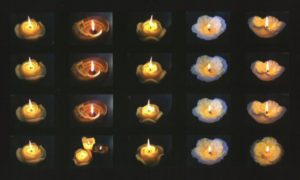
Hung Liu – Questions from the Sky
The second installment of Hung Liu’s touring solo museum shows opened last week at the San Jose Museum of Art. According to the SJMA “This exhibition showcases surprising new, intimate work by Liu. She contemplates the cycles of life, death, and memory in an installation of three videos titled Black Rain, Candle, and Between Sky and Earth (2013). The videos are based on snapshots made daily with her iPhone over the course of the year following her mother’s death. These simple images of burning candles; fallen birds and deer; Buddha’s hand citrus fruit; and cloud formations poetically reflect Liu’s contemplative state of mind.
Hung Liu Article in SquareCylinder

Hung Liu – Visage I
SquareCylinder.com ran a great article on Hung Liu and her solo retrospective at the Oakland Museum of California and its now finished companion exhibition at the Mills College Museum of Art. The article gives us very good information about Hung’s past, and how it plays out in her work–the counter-revolutionary act of looking backward into the past rather than looking forward in the Maoist manner.
A link to the article is here.
Hung Liu Images in Art Practical
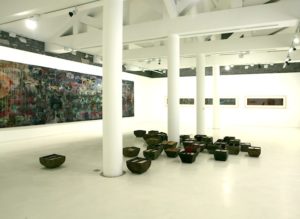
Hung Liu Images in Art Practical
Hung Liu is one of the most important artists working today. Matthew Harrison Tedford has written a splendid profile of Hung Liu in Art Practical. Covering arts in the Bay Area, Art Practical is running this article in advance of Hung’s talks at the Asian Art Museum, at Mills College, and her solo exhibitions at Mills College, the Oakland Museum of California, and the San Jose Museum of Art. Hung Liu is recognized as America’s most important Chinese artist. Hung Liu: Offerings (on view through March 17) examines the themes of cultural identity through works that navigate the complex journey of immigration and returning home. Trained as a social realist painter and muralist, her paintings, prints, and installations serve as memorials to the past while acknowledging the rapidly changing cultural dynamics in contemporary China.
A link to the article is here.
Hung Liu: Offerings at the Mills College Art Museum
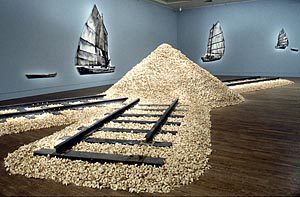
The Mills College Art Museum
The Mills College Art Museum is pleased to present Hung Liu: Offerings, a rare opportunity to experience two of the Oakland-based artist’s most significant large-scale installations: Jui Jin Shan (Old Gold Mountain) (1994) and Tai Cang—Great Granary (2008). These Hung Liu images examine the themes of memory, history, and cultural identity through works that navigate the life-long liminal experiences of immigration and homecoming. Accompanied by related paintings and prints, Jui Jin Shan and Tai Cang serve as memorials to the past while acknowledging the rapidly changing cultural dynamics in contemporary China. Hung Liu: Offerings runs through 17 March 2013.
A link to the exhibition is here.
Hung Liu at the Ernst Barlach Museum in Hamburg
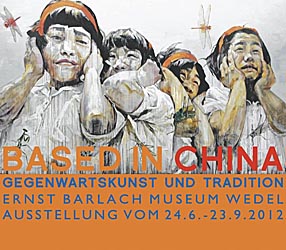
Hung Liu at the Ernst Barlach Museum in Hamburg
From June through September 2012 Hung Liu is in an exhibition titled “Based in China: Contemporary Art and Tradition” at the Ernst Barlach Museum in Hamburg, Germany. As the name suggests, the show explores how Chinese contemporary art is inextricably linked to the past in ways different from artistic practice in the West. The exhibition includes work by Chinese artistic luminaries Rong Rong, Zhang Huan, and Yin Xiuzhen.
Heroes Exhibition and Construct Reviews

Rusty Scruby – Construct in Colorado Creates
We’ve gotten some very good write-ups lately. Kate Petley and Rusty Scruby’s current exhibition Construct was written up by Leanne Goebel in Colorado Creates. Also, we received a great review of the Hung Liu, Deborah Oropallo and Squeak Carnwath show Heroes in Art Ltd. It’s a great issue of a great magazine and has lots of coverage of Santa Fe and Albuquerque in the July/August issue.
A copy of the Art Ltd. review may be downloaded here.
Hung Liu at the Belvedere Museum in Vienna
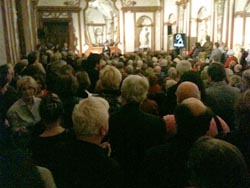
Hung Liu at the Belvedere Museum in Vienna
We just returned from a fabulous visit to Vienna. Visits to the MUMOK, Kunsthistoriches Museum, Akademie der Bildenden Künste, the Leopold Museum and the Upper Belvedere were capped by the opening for the exhibition GOLD. This comprehensive examination of the use of gold in artwork from Tiepolo to contemporary time featured a work by Hung Liu. Both the preview and the opening were packed with patrons filling the rooms of the former palace; rooms that were by themselves awash in gold. The exhibition runs through June 2012.
Hung Liu at the International Conference on Chinese Women and Visual Representation
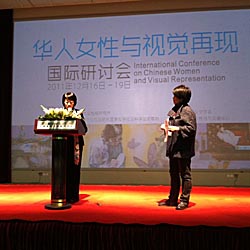
International Conference on Chinese Women and Visual Representation
In a first of its kind conference in Shanghai in December, Hung Liu not only designed the poster, but was a speaker. The conference itself focused on work by women in many fields, and on feminist art. It was also the first time gay and lesbian groups were invited to the conference. Hung reports that the women artists, filmmakers, academics and others she met were incredible, making breathtaking work. In Hung’s words, “There is hope!” All the best in 2012!
Dec 7, 2011 | SCOPE Miami 2011 Wrap Up
Wow. We had an absolutely stellar fair this year at Scope Miami. Many works by Hung Liu, Eric Zener, Rusty Scruby, Kate Petley and Jenny Abell found collections, including two institutional collections. The atmosphere was electric at Scope this year with thousands of attendees and loads of press. The link to a blog mentioning us is here. Thanks, Miami!
Brilliant New Article on Hung Liu in Smithsonian American Art Magazine
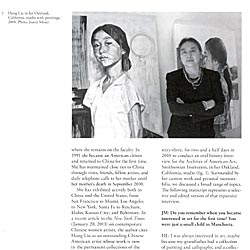
Hung Liu
In an 27-page article right after a piece on Donald Judd, Smithsonian American Art Museum Senior Curator Joann Moser does a superb job delivering us all sorts of fascinating stories during a conversation with Hung Liu. The Smithsonian will host a touring retrospective of Hung Liu’s work that originates at the Oakland Museum of California in 2013. In preparation for this major exhibition, Turner Carroll will host a large show of Hung’s newest Chinese Ballet series works, along with a comprehensive contextual body of her oil painting from the last ten years. This show opens with us in Santa Fe on 5 August 2011, and runs for four weeks.
A Conversation with Hung Liu
Dallas Art Fair
We just wrapped up a very successful Dallas Art Fair at the F.I.G. here in Dallas. Major works by Deborah Oropallo, Hung Liu, Rex Ray and Gino Miles found new homes. Most of these collections are important ones, and we are very pleased by the results. We look forward to more opportunities here in the future!
Hung Liu at Turner Carroll Gallery Project Space in Dallas, TX
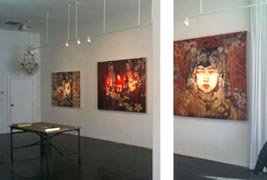
Hotel ZaZa for Hung Liu
We had a fabulous opening at our space at the Hotel ZaZa for Hung Liu. The show is an exploration of the influences on and work by Hung Liu. In this exhibition, part of our kick-off for the Dallas Art Fair, we had a range of media Hung has used over the years of her amazing career. Forms include tapestry, video, oil on canvas, resin panels and work on paper. The show here in Dallas runs through 6 May.
December 13, 2010 – JanuaryY 17, 2011 | Rojo: New Works by Hung Liu, Rex Ray, Inez Storer and Deborah Oropallo
Explorations on a theme of red. Jealousy, communism, love, blood, cocktails, sunset. We all know red is a very powerful color. What does it do in a painting? Come see these important American artists wrangle, submit, and explore what red means in a painting.
Opening Reception Friday, 13 December 2010 from 5 to 7pm.
Hung Liu: 2011 winner of the SGC International 2011 Award for Lifetime Achievement in Printmaking
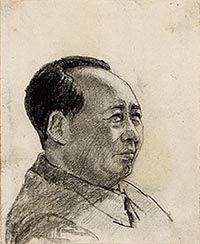
Hung Liu: 2011 Winner of the SGC International 2011 Award
We are very proud to announce Hung Liu is the 2011 winner of the SGC International 2011 Award for Lifetime Achievement in Printmaking. This award includes an invitation to give a public address to the membership of SGCI at the 2011 International Conference, “Equilibrium,” to be held at Washington University in St. Louis, March 16-19, 2011. The Lifetime Achievement Award is given to an individual who has made an outstanding contribution to the professional development of printmaking as a fine art. Recent winners of the Lifetime Achievement in Printmaking award include Chuck Close (2004), William Wiley (2005), Warrington Colescott (2006), Xu Bing (2007), Kerry James Marshall (2008), Leonard Lehrer (2009), and Judy Pfaff (2010).

